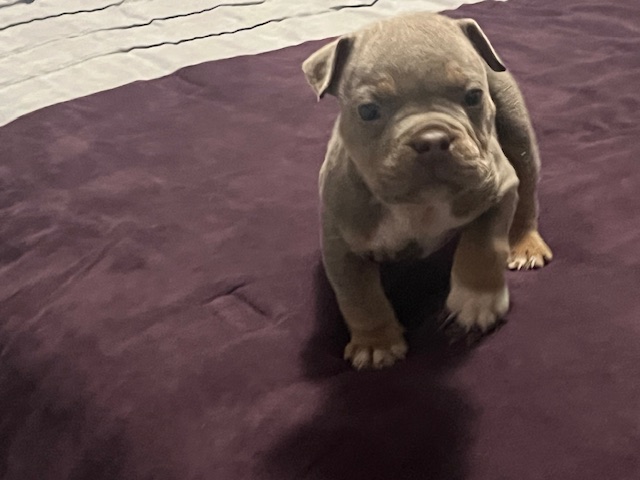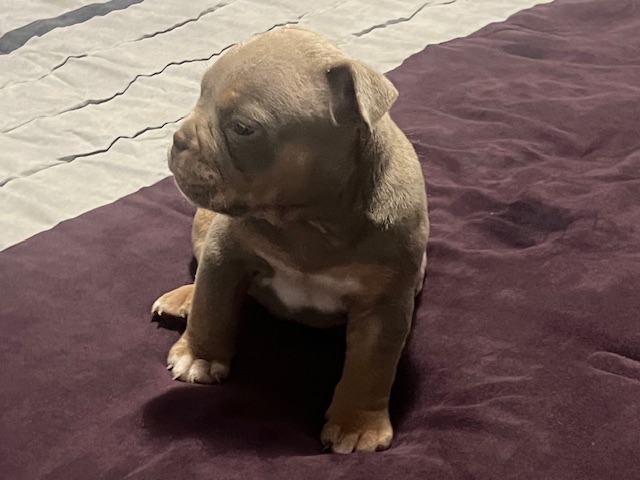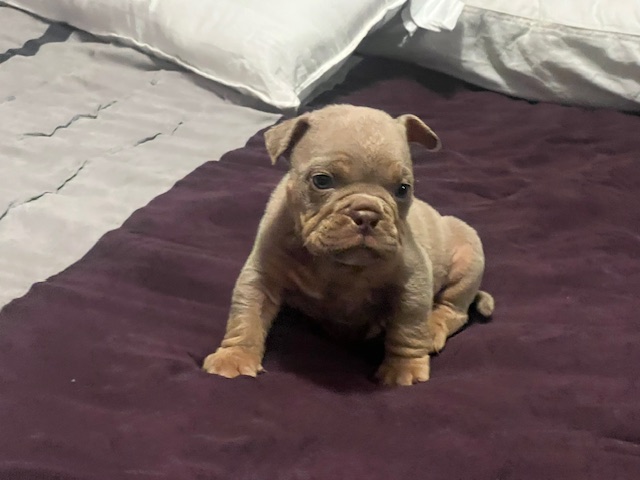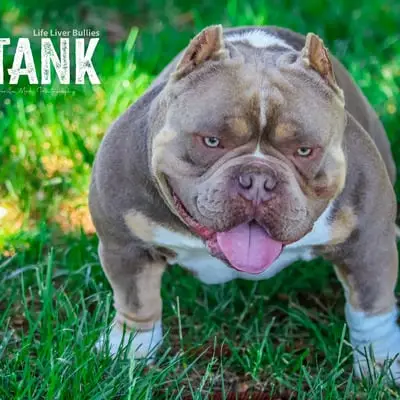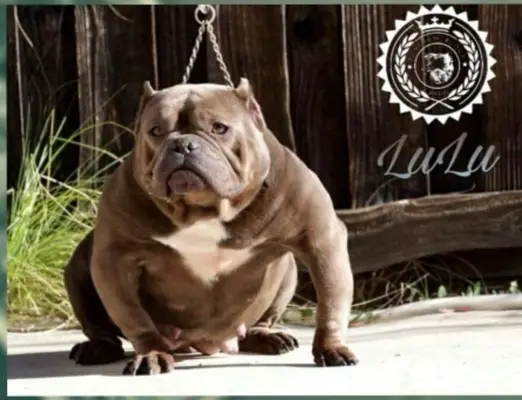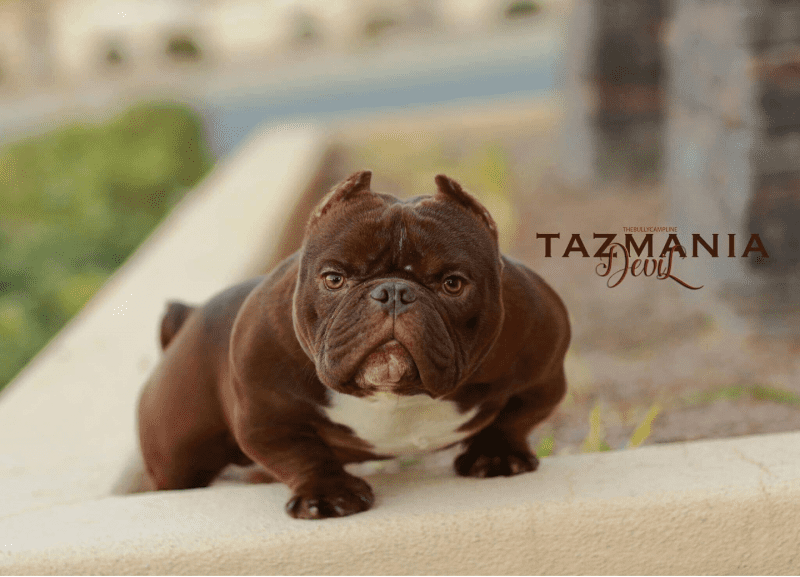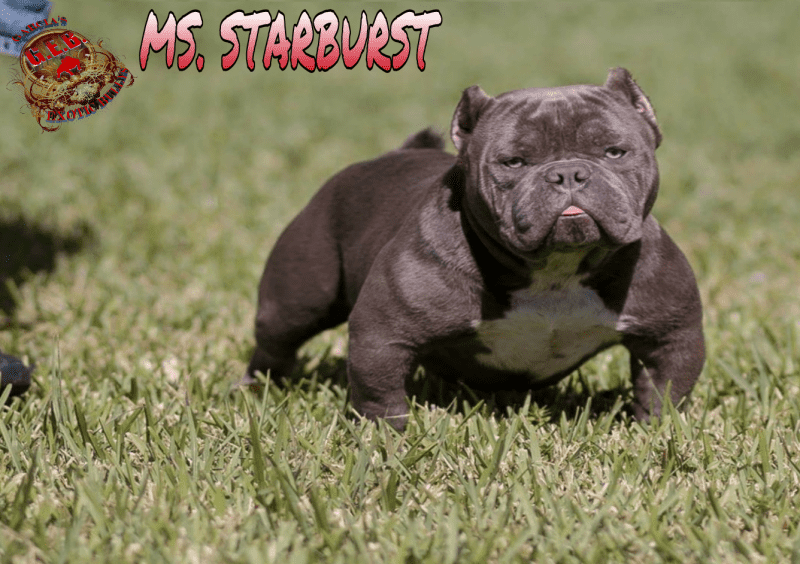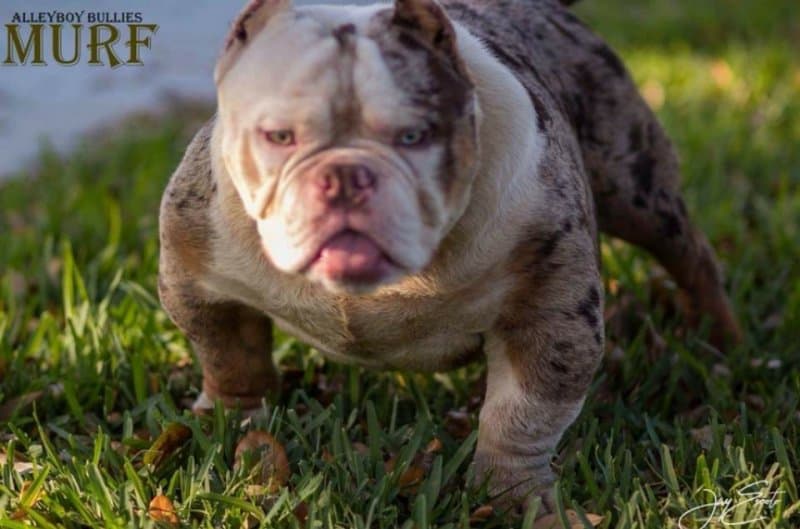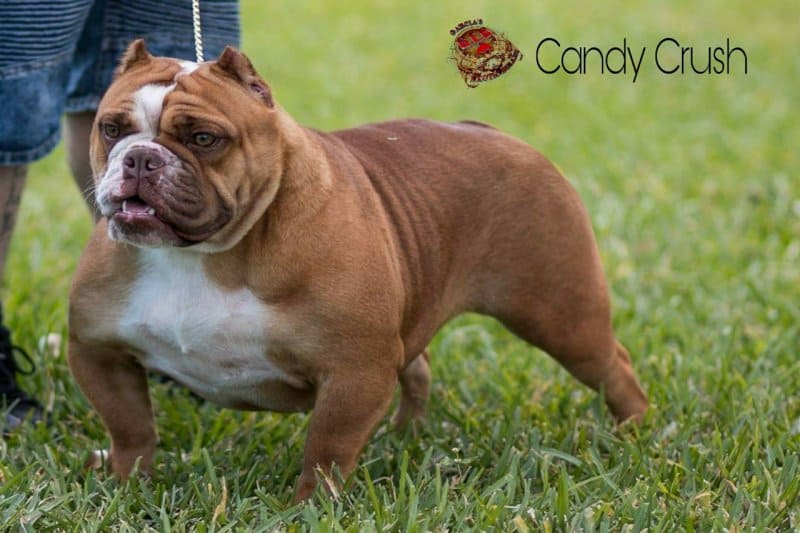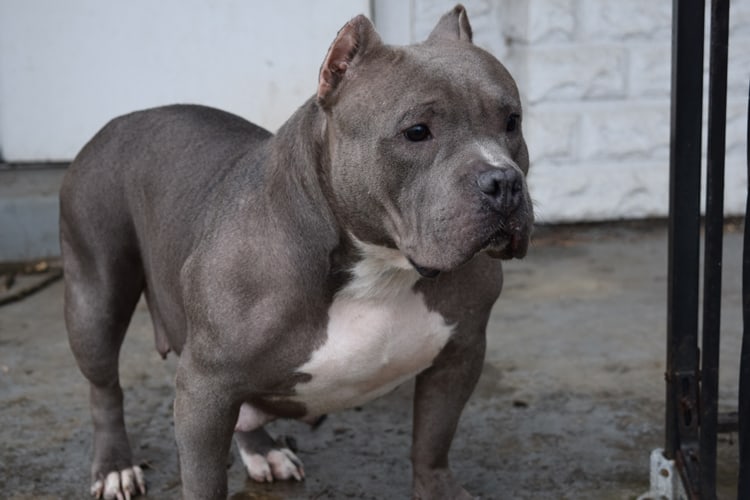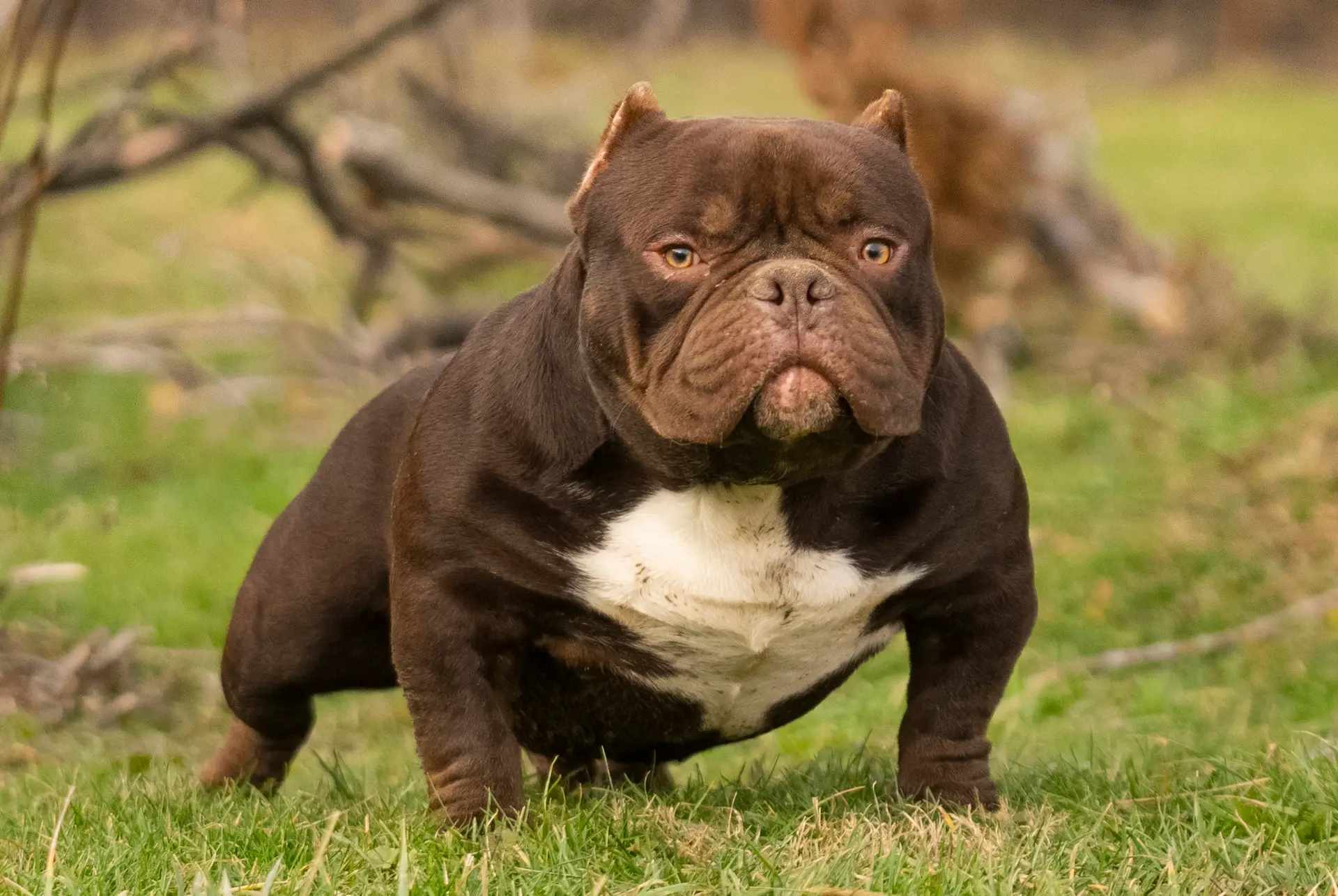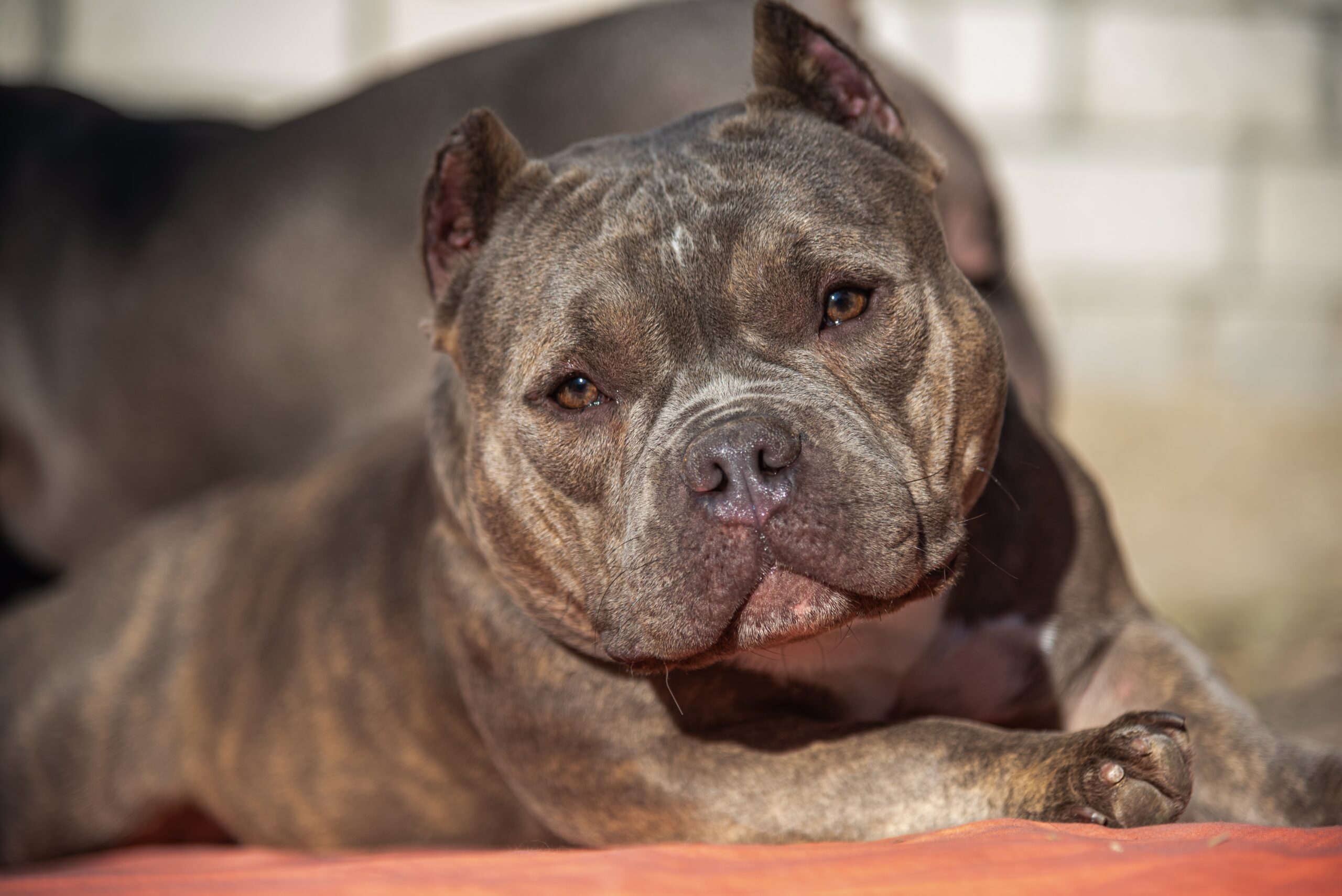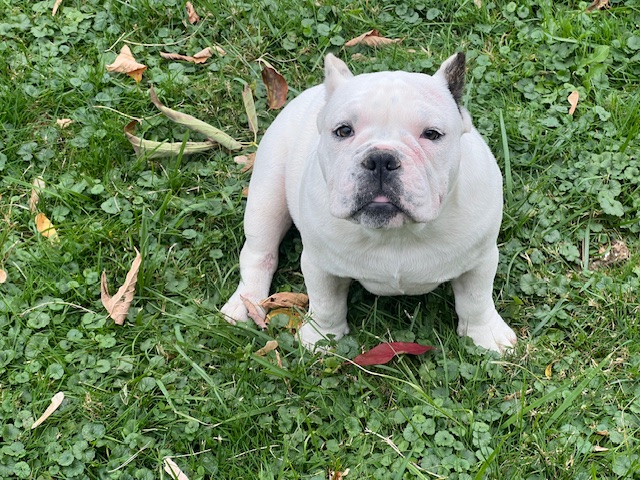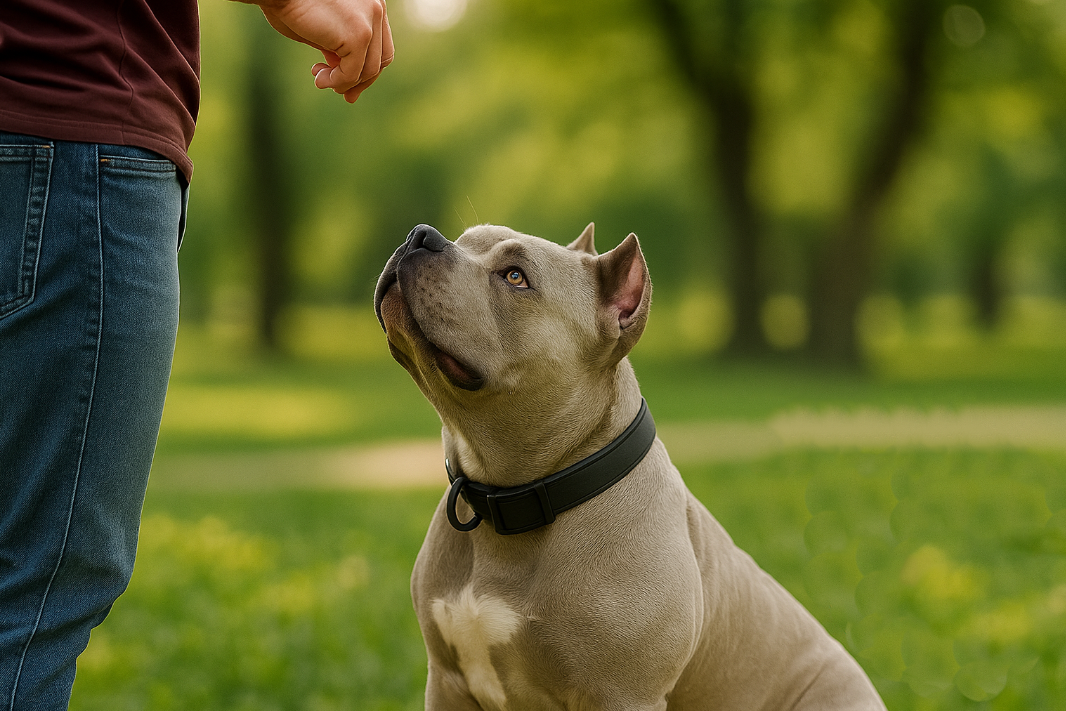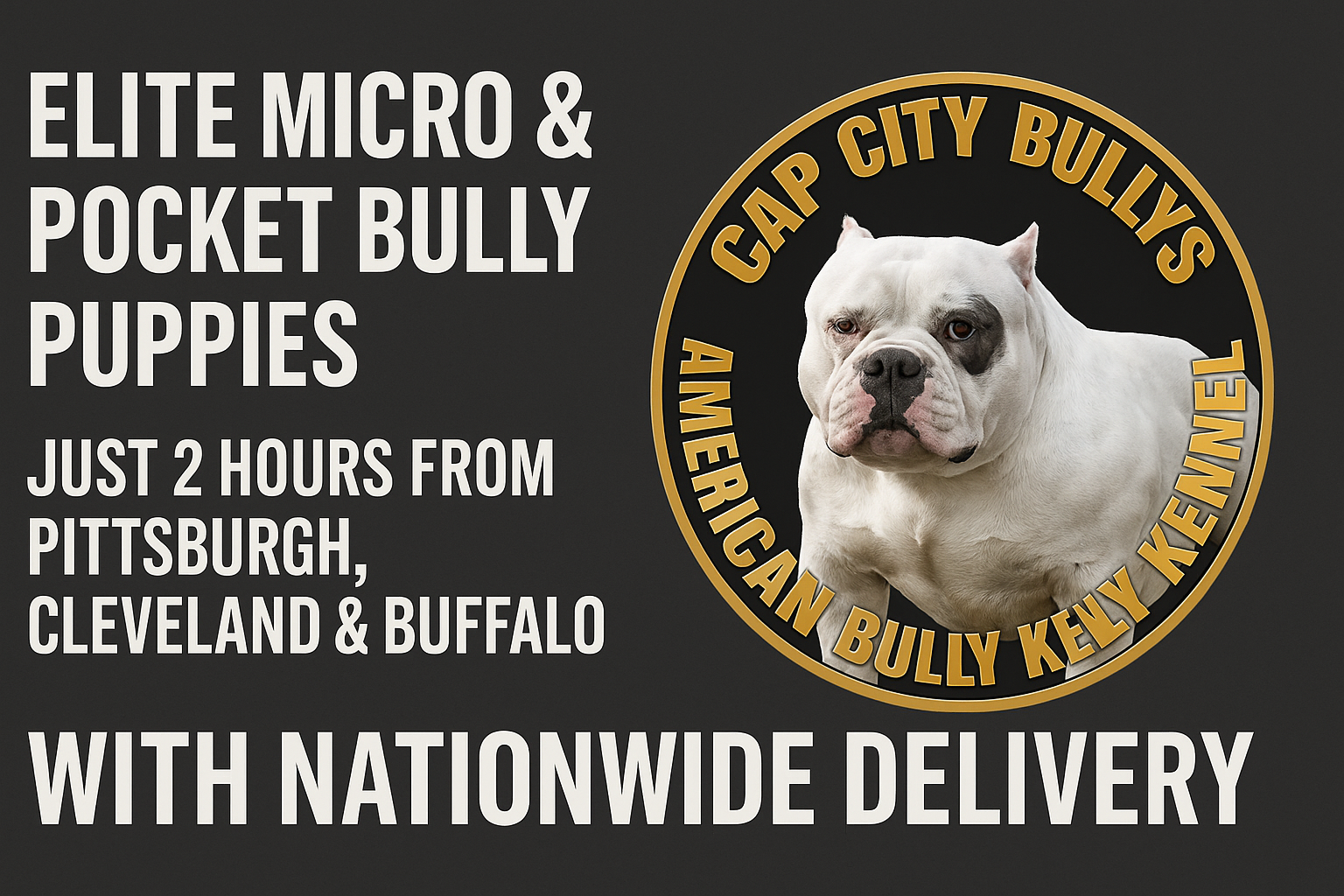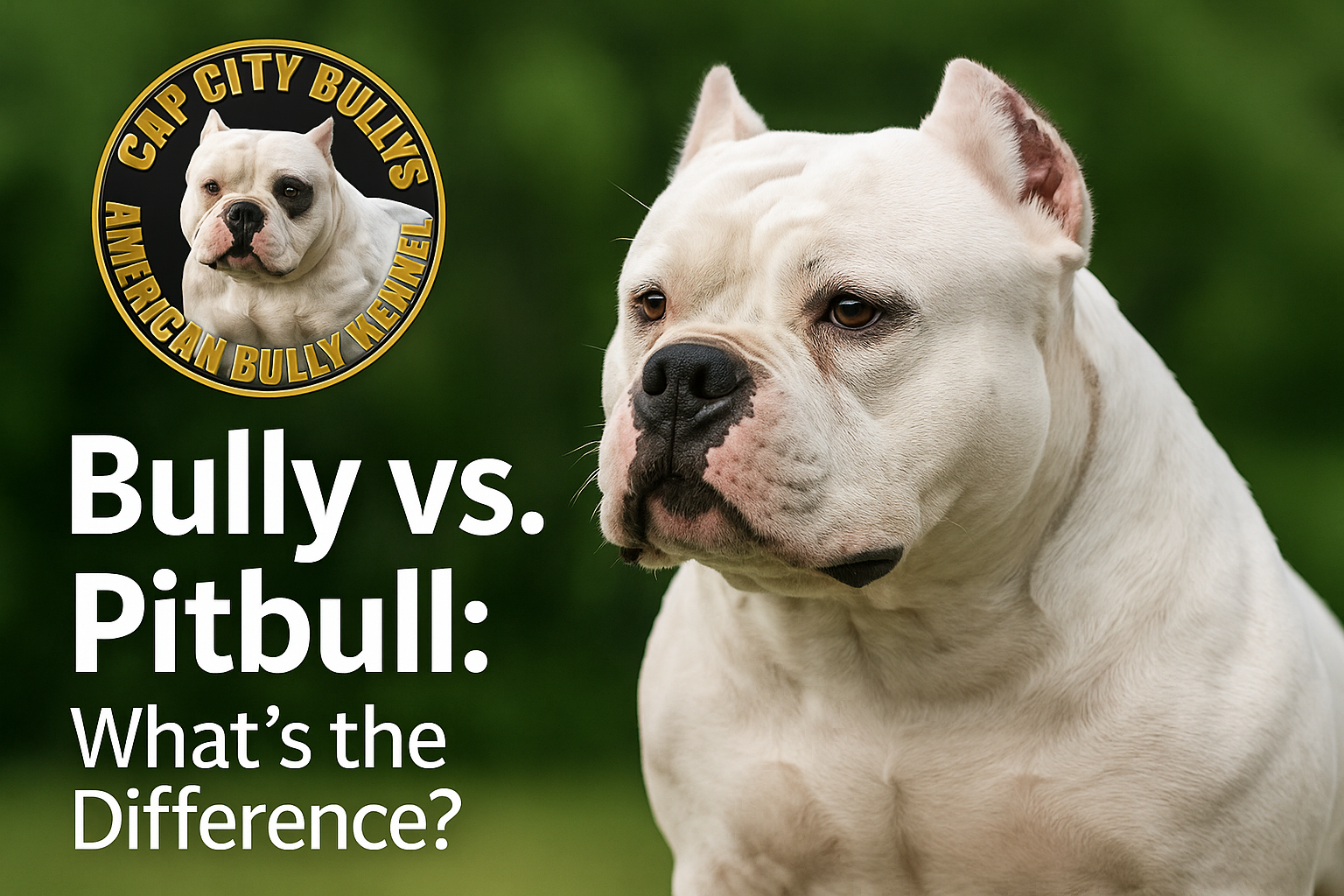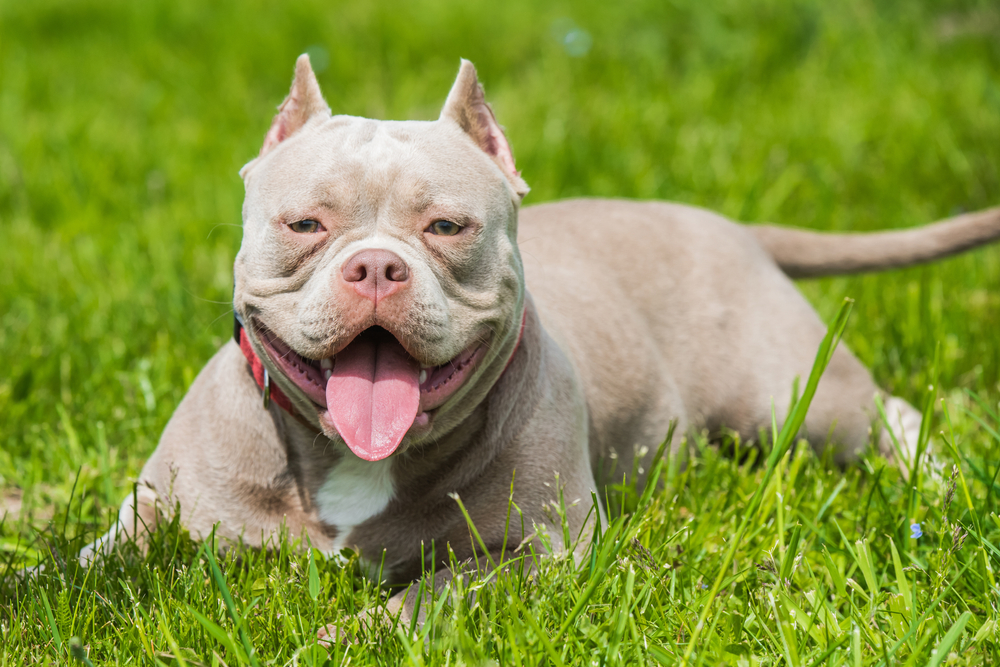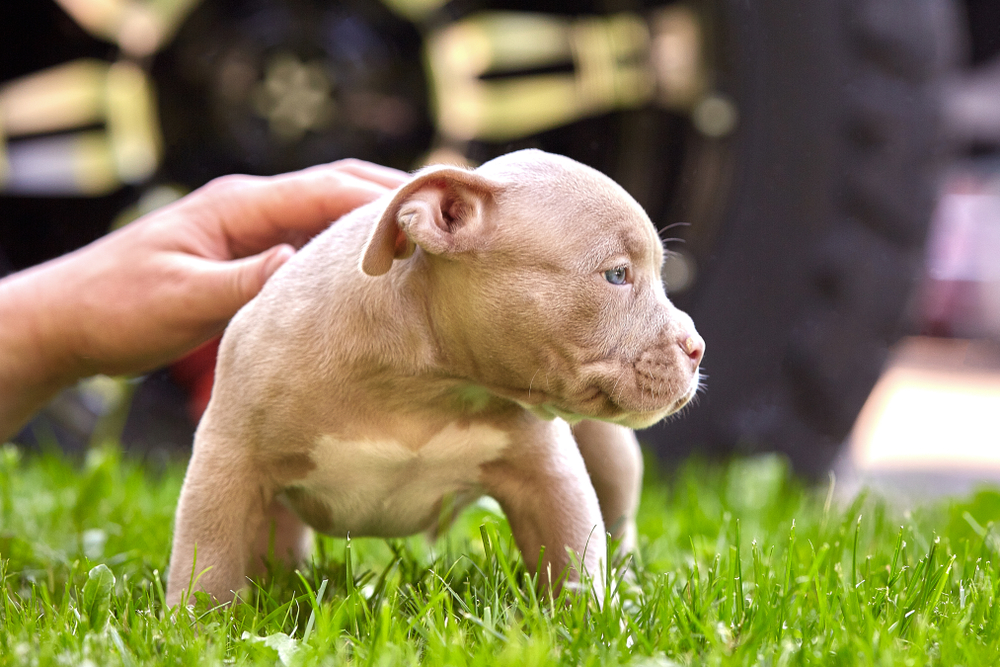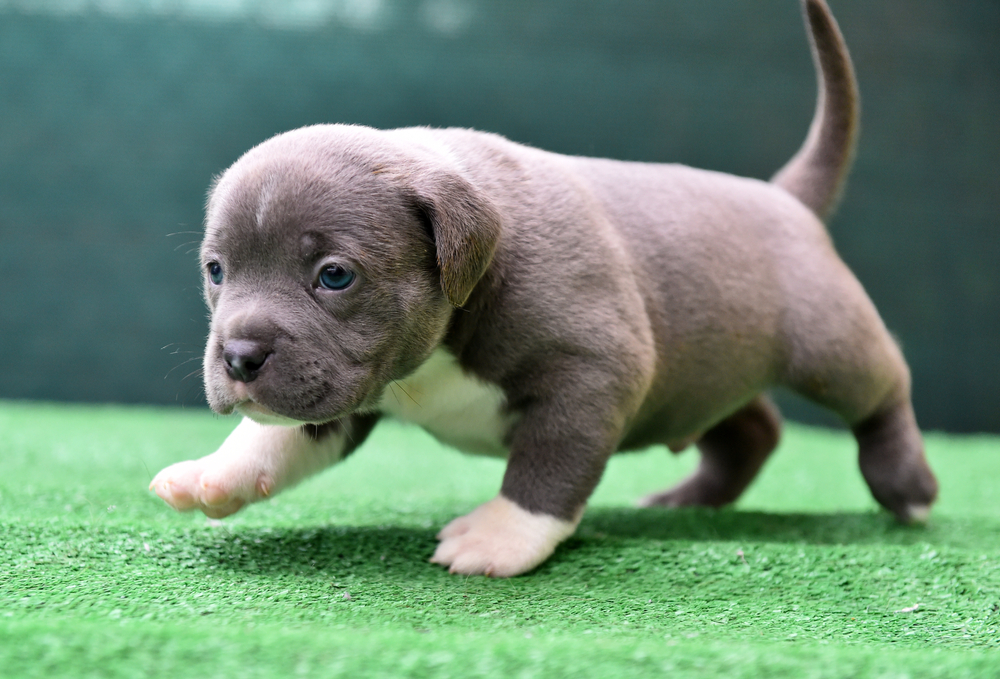Cap City Bullys
🔥 LIMITED STUD SPECIAL – ICON IS OPEN! 🔥
Short. Compact. All gas, no brakes. 🐾
Icon is stacked with Giagi × Devilspit blood—blocky head, wide chest, clean structure, and show-quality presence. 💪
💰 Stud Fee: $1,000 | Lock In Now for $500!
⏳ Limited-time offer – secure elite genetics while slots last!
📍 Erie, PA | 🚚 Semen shipping Available
🌟 Introducing Icon: The Epitome of Micro Bully Excellence! 🏆
Elevate your breeding program with Icon, a short, compact Micro Bully that embodies perfection. 🐾 With a powerful block head, straight back, wide chest, and a clean, impeccable structure, Icon has it all. 🚀 Don’t miss the chance to enhance your bloodline with this exceptional stud. 🌈 Secure your breeding legacy – book Icon for stud services now! 📞 Call orText (614) 507-9702 for inquiries and elevate your breeding game with Icon’s outstanding qualities. 🐶🔥
ICON VIDEO
CAPCITY STUD SERVICE
We offer stud service to approved females. We offer in house breeding or semen shipping. All of our Bully’s are available for stud, we have a broad selection of the best bloodlines in the nation
For more information: call/text (614) 507-9702
***SPECIAL STUD FEE $1,000.00 ***LIMITED TIME***
$500 🔒/ $500
STUD FEE $2,500.00
ICON’s PEDIGREE
BLUE JAY  3100 Exotics | GIAGI 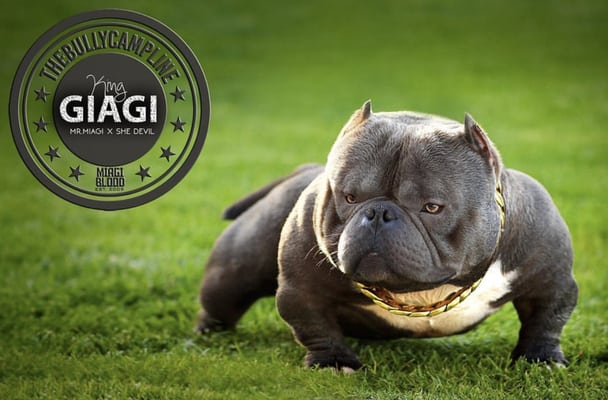 The Bullycampline | Mr. Miagi  The Bullycampline |
SHE DEVIL  The Bullycampline | ||
SKITTLES  3100 Exotics | NAPOLEON  TLB | |
SHINOBI  Top Of The Line | ||
Goldie 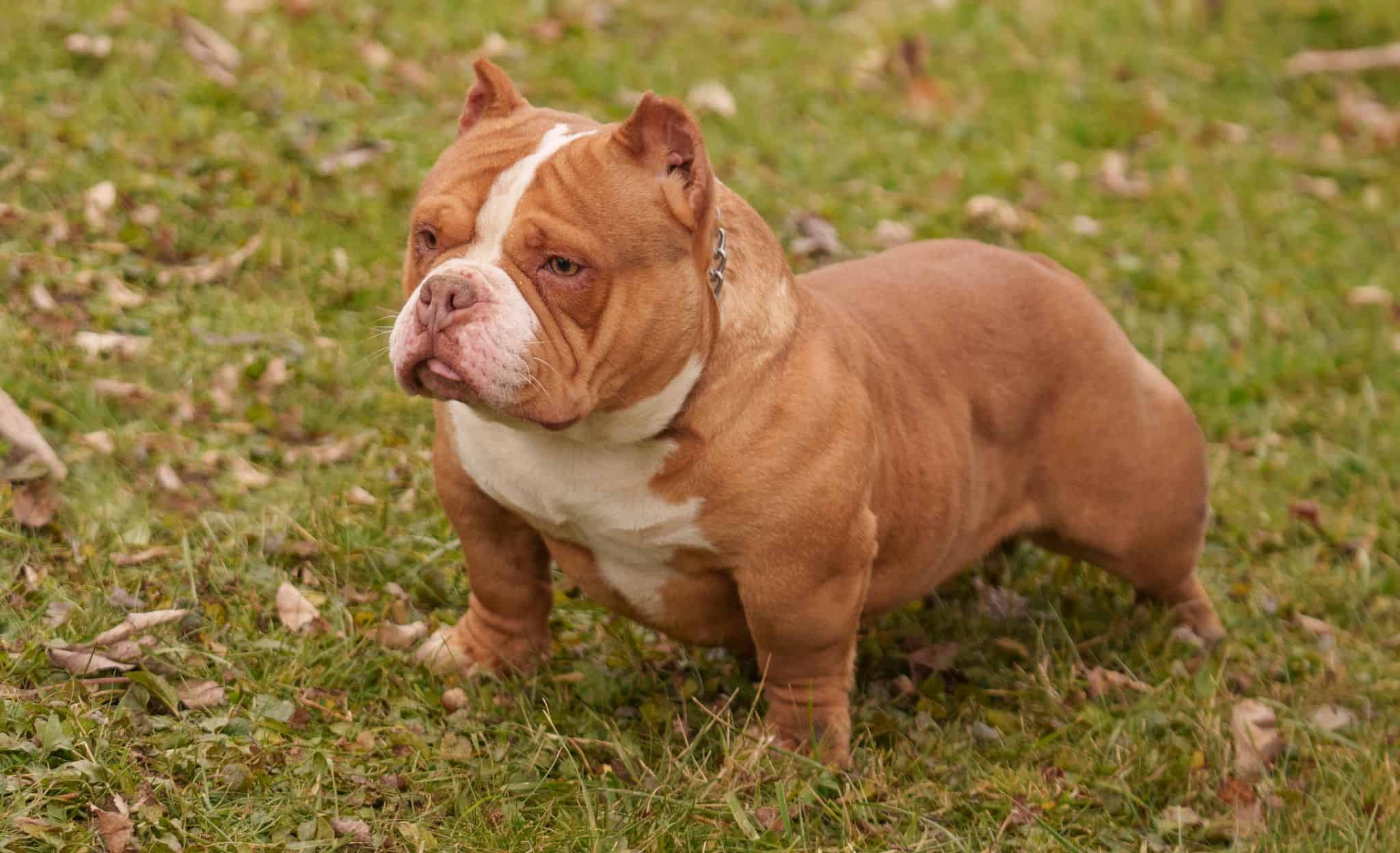 CapCity Bullys | BULLWINKLE 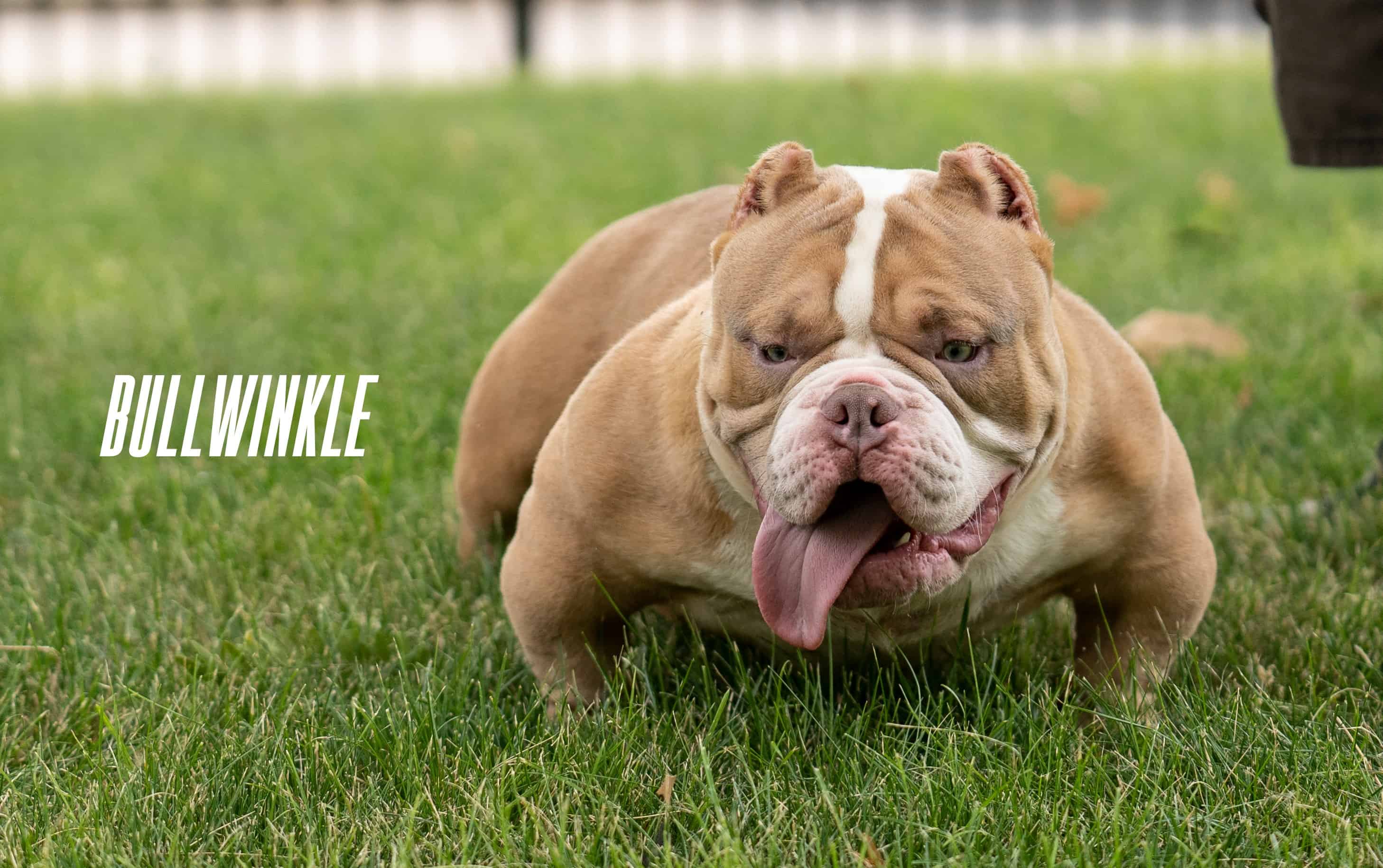 Freakline Bulls | DAREDEVIL 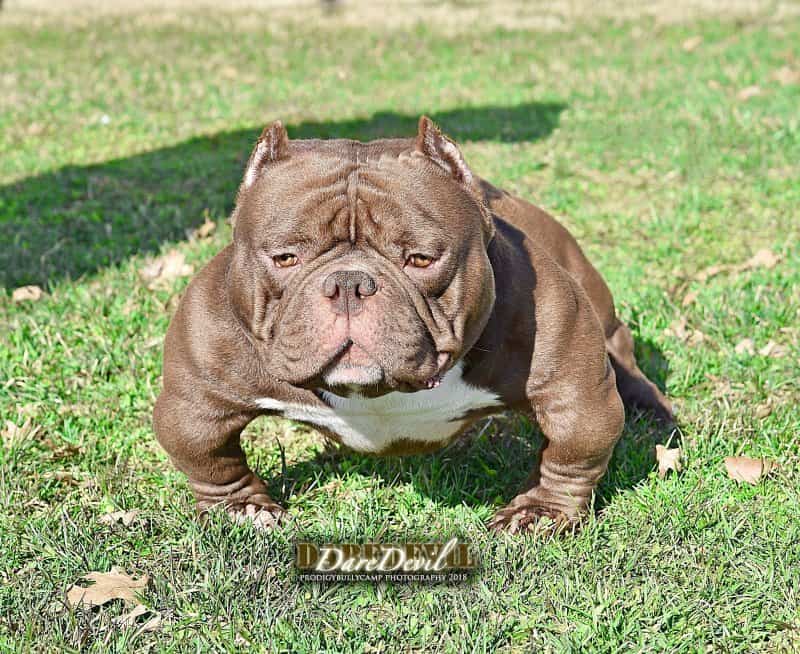 MBK |
MARTINI  EBE | ||
TORNADO  CapCity Bullys | CELL BLOCK  Prodigy Bullycamp | |
BLACK ONYX
Capcity Bullys |
What Is a Micro Bully? Everything You Need to Know About This Compact Powerhouse
When you think of an American Bully, images of muscular physiques and massive head structures often come to mind. But within the bully family, there’s a fascinating and rapidly growing category designed for maximum impact in a minimum size: the Micro Bully. Compact, powerful, and charismatic, this “tiny titan” continues to dominate the hearts of breeders and enthusiasts alike. If you’re curious about what sets Micro Bullies apart—and why Capcity Bullys specializes in these exceptional dogs alongside Pocket Bullies—read on to discover everything you need to know.
1. What Is a Micro Bully?
A Micro Bully is an unofficial variant within the American Bully breed, typically standing under 14 inches tall (often 10–13″) and built with remarkably dense muscle and bone. Despite their pint-size stature, Micro Bullies display the same powerful heads, thick necks, broad chests, and athletic presence of standard Bullies—only in a smaller, more compact package.
🟡 Key Traits:
Height: Generally 10–13″ at the withers
Build: Ultra-compact, robust structure with heavy bone
Head: Blocky, broad skull with well-defined jaw
Temperament: Charismatic, confident, and people-oriented
Micro Bullies blend impressive muscling and refined proportions into a smaller frame—a design both adored and sought after in the bully community.
2. Micro Bully vs. Pocket Bully: What’s the Difference?
Though both types fall in the compact bully category, their differences are distinct:
| Trait | Micro Bully | Pocket Bully |
|---|---|---|
| Height | 10–13″ | 14–17″ |
| Build | Exceptionally compact, thick bone | Slightly taller, balanced structure |
| Head | Extremely blocky and heavy | Well-defined but proportioned |
| Purpose | Specialty, rare, show/breeding focus | Companion, conformation, show potential |
Pocket Bullies, recognized by bodies like ABR, ABKC and UKC, offer a smaller alternative to Standards (~17–20″). Micro Bullies take compactness a step further recognized and by ABR and UKC.
3. Why the Micro Bully Trend is Booming
🔹 Instant “WOW” Factor
When people see a Micro Bully for the first time, their reaction is immediate: a small dog that looks like a champion bodybuilder.
🔹 Elite Genetics
Breeding a Micro Bully requires careful strategy—close-line breeding, selection for ultra-compact frames, and confirmation of health and temperament. The result? A high-demand dog with rare genetics.
🔹 Versatility
Micro Bullies suit small living spaces better than larger bully types. Despite size, they are energetic, athletic, and ideal for active families.
🔹 Breed Evolution
With breeder innovation, Micro Bullies are shaping the future of the American Bully breed—taking the best traits (muscle, structure, temperament) and condensing them into a more accessible size.
4. Capcity Bullys: Erie, PA’s Micro & Pocket Bully Experts
At Capcity Bullys, located in Erie, PA, we’ve dedicated years to perfecting Micro and Pocket Bully breeding. Here’s what sets us apart:
🛠️ Precision Breeding
We strategically pair dogs like Mayor (grandson of Bape) and Storm (Youngblood × Bullsace), fine-tuning size, bone, and structure to produce Micro Bullies with massive impact.
🌟 Champion Pedigrees
Our breeding stock features elite bloodlines—Bape, Youngblood, Bullsace, Daredevil—ensuring our puppies inherit proven muscle, temperament, and confirmation.
🇺🇸 ABKC-Pocket Standards
While our Micros often fall below ABKC Pocket height, we maintain the same conformation focus to meet show-quality standards in a boutique package.
🏡 Family-Raised & Socialized
All puppies are raised in a nurturing family environment. Early interaction with humans, sights, and sounds ensures well-rounded, confident dogs.
🌍 Serving PA/NY/OH
Erie, PA is home base for our program, but we proudly serve families and breeders across Pennsylvania, New York, Ohio—and offer nationwide shipping.
5. Choosing Between Micro & Pocket Bully
❓ Ask Yourself:
Space constraints – Studio apartment or large backyard?
Family dynamic – Kids? Seniors? Seniors typically prefer smaller Micros.
Investment and rarity – Micro Bullies are rare and in high demand.
Once you’ve identified your needs, Capcity Bullys can guide you to the perfect fit: miniature power with Micro Bullies or show-ready Pocket pups.
6. Micro Bully Care: Diet, Training, & Health
🍖 Nutrition
High-protein, meat-based diets fuel their muscular bodies. Supplements like glucosamine support joint health in these muscular mites.
🏋️ Training
Short, consistent training works best. They learn quickly, respond well to positive reinforcement, and bond strongly with their owner. Agility or obstacle courses are excellent outlets for their athleticism.
🛁 Grooming
They have single-layer coats—minimal shedding, easy to groom. Weekly brushing and regular nail trims keep them looking sharp.
🩺 Health Monitoring
Despite petite size, they require careful attention to hips and joints. Regular vet check-ups and healthy weight management are key.
7. What You Get from Capcity Bullys
When choosing a Micro or Pocket Bully, you’re not just getting a dog—you’re receiving:
Elite Micro & Pocket Bully puppies, bred to excel in structure, muscle, and temperament
Full health documentation—vet records, wellness checks, genetic testing
American Bully Registry or ABKC Pocket registration
Lifetime breeder support—guidance on nutrition, training, structure
Guaranteed clean structure and phenomenal bully type
8. Frequently Asked Questions
Q: Do you offer both Micro and Pocket Bully puppies?
Yes—we specialize in both, providing family-friendly companions and show-quality pups.
Q: What’s the difference in pricing?
Micro Bullies often carry a premium due to rarity. Pricing reflects bloodline, size, and structure.
Q: Do Micro Bullies stay small?
Generally, yes. They reach adult size (~10–13″) and stay compact. Early vet care and healthy weight maintenance support proper growth.
Q: Are these dogs good with families?
Absolutely. American Bullies are known for being loyal, gentle, and great with kids—regardless of size.
Q: Can I meet a stud or adopt an adult Bully?
We offer stud services and occasionally list adult dogs. Visit our “Stud Service” page for details.
9. Choosing Your Perfect Pup
Browse current litters – Our site showcases Micro and Pocket Bully puppies available now.
Read bloodline and structure data – See head-to-tail information to know exactly what you’re getting.
Secure your puppy – Reserve early with a deposit.
Prepare your home – We’ll send a complete care guide for your new companion.
Stay connected – Regular check-ins, photo updates, and support from the Capcity Bullys team.
10. Final Thoughts: The Power of Compact
Micro Bullies pack undeniable physical presence into small frames. Their combination of muscle, structure, and charisma creates a canine experience like no other. At Capcity Bullys, we’re proud to be innovators in this niche. With selective breeding, ethical values, and a drive for excellence, we produce Micro and Pocket Bullies designed for families, shows, and breeding success.
Ready to meet a compact powerhouse? Visit the Capcity Bullys website today to explore upcoming litters, history-rich bloodlines, and program details.
📍 Erie, Pennsylvania—serving PA, NY, OH
🐾 CapcityBullys.com | Follow us on Instagram & Facebook
Welcome to Cap City Bullys — The #1 Choice for Show-Quality American Bully Puppies
At Cap City Bullys, we’ve spent 15+ years perfecting the art of breeding purebred, registered American Bully puppies that stand out for their muscular conformation, rock-solid health, and calm, even temperaments. Located in Erie, Pennsylvania, our family-run kennel serves bully enthusiasts from New York to California—and ships champion-line puppies safely across the globe.
Puppies For Sale At Capcity Bullys
Breedings – Upcoming Pups
Top 10 American Bully Frequently Asked Questions — Answered by Experts
Cap City Bullys is Pennsylvania’s premier American Bully breeder, serving families nationwide and worldwide from our Erie, PA facility. With over 15 years of experience, we specialize in producing champion-line, show-quality American Bully puppies noted for their muscular conformation, solid health, and even temperaments. Whether you’re new to the breed or a seasoned Bully enthusiast, these top 10 expert answers will help you understand everything from breed origins to training tips.
1. What Is an American Bully and Where Did This Breed Come From?
The American Bully is a modern breed developed in the United States beginning in the 1980s and 1990s. Breeders sought to combine the best traits of the American Pit Bull Terrier (APBT) and American Staffordshire Terrier (AmStaff) with the bulk and low-slung stature of Bulldog breeds. The goal was a balanced companion dog—muscular and confident, yet gentle and sociable enough for families. Today’s American Bully lines often trace back to renowned bloodlines such as Bape, Bullsace, and Devilspit.
Unlike the APBT, which has a history in working and sporting roles, the American Bully was specifically bred for temperament first—emphasizing stable, friendly personalities. Through careful selection and genetic testing, reputable kennels like Cap City Bullys ensure each litter possesses strong health and predictable temperament. Registries such as the American Bully Kennel Club (ABKC) and United Kennel Club (UKC) now maintain official breed standards focusing on a blocky head, wide chest, and a compact, muscular build.
2. What Are the Different American Bully Types and Sizes?
American Bullies come in five main categories recognized by most major registries:
- Micro:
- Height (males): Under 14 inches; (females): Under 14 inches
- The same muscular definition and confident presence as standard bullies.
- Their compact size makes apartment living or small homes a breeze.
- Pocket:
- Height (males): 14 – 17 inches; (females): 14 – 16 inches
- Retains the thick bone and muscle of Standard Bullies but in a smaller package.
- Great for apartment living or smaller homes, without sacrificing the breed’s iconic look.
- Standard:
- Height (males): 17–20 inches; (females): 16–19 inches
- Muscular, well-balanced frame without extreme bulkiness.
- Ideal for families seeking a dog that combines athleticism with moderate size.
- XL (Extreme):
- Height (males): 20–23 inches; (females): 19–22 inches
- Heavily muscled, wide-chested, and often weighing well over 80 pounds.
- Requires experienced handling, ample space, and a high level of exercise.
- Classic:
- Similar height to Standard but with a leaner, less bulky build reminiscent of early Bully lines.
- Suited for owners who want the Bully temperament without the extreme muscle mass.
Choosing the right type depends on factors like living space, family size, and lifestyle. For example, Micro Bullies excel in apartments because they require slightly less room, while XL Bullies need larger yards and stronger handlers to manage their power. Cap City Bullys produces Micro & Pocket types, each backed by champion pedigrees and health-tested lines.
3. Are American Bullies Aggressive? Debunking Common Misconceptions
Well-bred American Bullies are known for their calm, friendly dispositions, not aggression. Their temperament is the result of decades of selective breeding prioritizing stable, family-oriented behavior. Unlike outdated stereotypes that lump all “bully” breeds into a single category, the modern American Bully standard mandates a gentle, sociable nature suitable for children, seniors, and other pets.
Cap City Bullys puppies are raised in a family environment, exposed to children, household pets, and daily household noises from day one. This early socialization minimizes fear-based reactions and teaches them how to interact politely with strangers. While any dog can become aggressive under poor management—lack of socialization, abusive training methods, or neglect—a properly raised American Bully is unlikely to demonstrate unprovoked aggression. Instead, you’ll find a loyal, loving companion eager to please.
Breed-specific legislation (BSL) sometimes targets Bully-type appearances rather than actual behavior, which experts argue is counterproductive. Responsible ownership—defined by proper socialization, training, and veterinary care—remains the most effective way to reduce any risk of aggression.
4. How Much Exercise Do American Bullies Need Each Day?
American Bullies are moderately to highly active dogs that benefit from regular, structured physical activity. A lack of sufficient exercise can lead to boredom, weight gain, and potentially destructive behaviors such as chewing or digging. Here’s a guideline by life stage:
- Puppy (8–6 months):
- Short play sessions (5–10 minutes) several times a day, avoiding long runs or strenuous exercise to protect developing joints.
- Socialization outings—short, positive experiences with new people, pets, and environments.
- Adolescent (6–24 months):
- Two daily sessions of 15–20 minutes each: brisk walks, supervised fetch, and interactive play.
- Introduction to mental enrichment games (puzzle toys, basic scent work).
- Adult (2+ years):
- At least 45–60 minutes of physical exercise daily: mix brisk neighborhood walks, jogging (once fully grown), and structured play (tug, fetch).
- Mental stimulation: five-minute training drills (sit, down, recall) and puzzle feeders.
Cap City Bullys recommends owners provide a balanced exercise routine to promote healthy muscle development and maintain a lean physique. Mental enrichment—such as teaching new tricks or using treat-dispensing toys—helps satisfy a Bully’s intelligence and prevents boredom.
5. How Easy Is It to Train an American Bully?
Most American Bullies are highly intelligent and eager to please, making them relatively straightforward to train—if you use consistent, reward-based methods. Punishment-based training can backfire, leading to fear or aggression. Instead, positive reinforcement leverages treats, praise, and toys to encourage desired behaviors.
Key principles of effective Bully training:
- Immediate Marking: Use a clicker or a clear verbal marker like “Yes!” the instant your Bully performs the exact behavior you want. This clarifies the connection between action and reward.
- High-Value Rewards: Rotate between small pieces of cooked chicken, cheese, or turkey jerky to keep treats novel and highly motivating. For dogs less food-driven, use a favorite squeaky toy or tug rope.
- Short, Frequent Sessions: Especially for puppies, keep training sessions to 4–5 minutes, 2–3 times daily. Short bursts maintain focus and prevent frustration.
- Gradual Increase in Difficulty: Start in a quiet room for basic commands (sit, down, stay). Once those are solid, introduce mild distractions—family members walking by, other pets nearby.
Common training challenges like leash pulling can be addressed with a stop-and-go method: stop walking when the leash becomes tight; only resume (and reward) once the leash relaxes. If your Bully jumps during greetings, calmly turn away until all four paws are on the floor, then reward the calm behavior. Cap City Bullys puppies come with early obedience tips and lifetime training support to help you every step of the way.
6. What Are the Most Common Health Issues in American Bullies?
American Bullies, like all purebred dogs, have some genetic health predispositions. Responsible breeders such as Cap City Bullys screen parents for joint issues, heart conditions, and eye diseases to minimize these risks. Still, owners should remain vigilant for the following:
- Hip Dysplasia & Elbow Dysplasia: Abnormal joint development leading to arthritis. Regular vet visits, controlled exercise during puppyhood, and feeding a balanced, joint-supporting diet can mitigate risks.
- Cardiac Issues: Conditions like aortic stenosis or mitral valve disease. Reputable breeders provide cardiac clearances (via ultrasounds) for breeding dogs. Periodic heart checks are recommended.
- Eye Problems: Progressive retinal atrophy (PRA) and cataracts appear in some lines. Annual ophthalmologist exams catch issues early.
- Skin Allergies & Mange: Bullies often suffer from environmental or food sensitivities leading to itching, redness, or demodectic mange. Regular grooming, balanced nutrition, and prompt veterinary care help manage these conditions.
- Hypothyroidism: Low thyroid function can cause weight gain, lethargy, and coat changes. A simple blood test during routine checkups detects thyroid disorders, which are manageable with daily medication.
To keep your Bully in peak condition, follow a veterinary-recommended vaccination schedule, maintain parasite prevention year-round, brush teeth two to three times weekly, and schedule biannual wellness exams. Cap City Bullys’ Puppy Health Guarantee outlines our commitment to producing healthy, genetically sound puppies.
7. What Is the Typical Lifespan of an American Bully?
On average, American Bullies live 10–12 years, though many who receive excellent nutrition, consistent exercise, and regular veterinary care can surpass 12 years. Smaller types such as Pocket Bullies sometimes live a bit longer (12–14 years) due to lighter joint stress, while larger XL Bullies—which weigh more—often average closer to 10 years.
Factors Influencing Longevity:
- Genetics & Breeding Quality: Puppies from health-screened parents generally enjoy longer lifespans.
- Nutrition & Weight Management: A balanced, high-protein diet designed for muscular breeds promotes lean muscle mass and helps prevent obesity. Overweight Bullies risk hip dysplasia, heart strain, and diabetes.
- Regular Exercise & Mental Stimulation: Daily walks, play sessions, and puzzle toys keep a Bully mentally sharp, physically fit, and emotionally balanced.
- Preventive Care: Routine vet visits, dental cleanings, and parasite control detect and prevent health problems before they become severe. Cap City Bullys emphasizes preventive veterinary checks and provides detailed puppy medical records for every buyer.
8. Are American Bullies Good Family Pets?
American Bullies—when bred and socialized properly—excel as family companions. They exhibit remarkable loyalty, patience with children, and adaptability to various home environments: apartments, suburban homes, and rural properties alike.
Why Bullies Make Great Family Dogs
- Gentle Temperament: Breeders like Cap City Bullys focus on stable, friendly lines that remain calm around young children, seniors, and other pets. Early exposure to families helps ensure puppies learn appropriate behaviors.
- Protective Instincts: While not aggressive by nature, Bullies often develop strong protective bonds with their families, acting as effective watchdogs.
- Playful & Affectionate: They enjoy interactive play—fetch, tug-of-war—and relish cuddles on the couch. Their eagerness to please makes them ideal partners for family activities.
- Adaptability: Whether your household is high-energy or laid-back, Bullies adjust. They’ll match a jog around the block with you, then nap contentedly at your feet.
Considerations for Families
- Exercise Commitments: All Bullies need daily exercise—at least 45 minutes for adults and shorter, frequent playtimes for puppies. A bored Bully may resort to chewing or digging.
- Training & Socialization: Early obedience training and socialization are essential. Cap City Bullys workshops and resources guide families through positive reinforcement methods to instill good manners.
- Space & Safety: While Pocket Bullies can thrive in apartments, Standard and XL Bullies benefit from secure yards. Ensure fences are sturdy and tall enough to contain a muscular dog.
With proper responsibilities—training, exercise, and supervision—American Bullies become loyal, loving family members capable of fitting into diverse lifestyles.
9. How Much Does an American Bully Cost, and What’s Included with Purchase?
Price Ranges
Factors affecting price include pedigree, coat color (rare colors command premiums), health clearances, and breeder reputation. Cap City Bullys, as a trusted Pennsylvania breeder, offers prices reflecting our 15+ years of expertise, champion pedigrees, and rigorous health testing.
What You Get When You Buy from Cap City Bullys
- Health Guarantee & Genetic Screens:
- Written health contract covering hip dysplasia, heart conditions, and eye issues for the first two years.
- All parents cleared via OFA, PennHIP, and CERF certifications.
- Initial Medical Care:
- Up-to-date puppy vaccinations (distemper, parvo, etc.).
- Deworming schedule.
- Lifetime Breeder Support:
- Ongoing guidance on training, nutrition, grooming, and health issues.
- Access to our proprietary training e-book and blog resources.
- Nationwide & Worldwide Delivery:
- Safe, temperature-controlled transport to your door—domestic or international.
- Real-time updates on travel status.
Cap City Bullys’ transparent pricing and comprehensive support ensure you know exactly what to expect when you invest in a healthy American Bully companion.
10. How Do I Choose the Right American Bully Puppy for My Family?
Selecting the perfect puppy involves multiple considerations—size, temperament, health, and lifestyle compatibility. Cap City Bullys helps guide families through this process with personalized support.
Key Factors to Evaluate
- Size & Space Requirements:
- Micro Bully: The smallest in the Bully family, suited for urban living. Requires moderate exercise.
- Pocket Bully: Ideally suited for apartments or smaller living spaces. Requires moderate exercise.
- Standard Bully: Fits most suburban homes with yards. Balanced exercise needs.
- XL Bully: Demands a large yard and strong handler; high exercise requirements.
- Classic Bully: A balance of moderate size and a more streamlined build.
- Family Composition & Lifestyle:
- Homes with Young Children: Puppies from calm, well-socialized lines known for gentle dispositions. Puppies are raised around children from day one at Cap City Bullys.
- Active Singles/Couples: Consider older juveniles or adults already housetrained and basic-obedience tested.
- Show vs. Pet: Show-quality pups come from champion-lines, with pedigrees from families like Bape × Devilspit; they carry breeding rights. Pet-only puppies reduce initial cost if you don’t plan to breed.
- Temperament & Early Testing:
- Cap City Bullys employs Holistic Early Neurological Stimulation (HENS) and temperament assessments at 4–5 weeks, evaluating prey drive, sensitivity, and social interest.
- Puppies that confidently approach handlers, show curiosity, and remain calm under mild stress typically excel in family settings.
- Health Clearances & Guarantees:
- Ensure parents have passed hip/elbow X-rays, cardiac ultrasounds, and eye exams.
- Cap City Bullys provides all puppy buyers with health clearances and a detailed record of early veterinary visits.
- Breeder Reputation & Support:
- Confirm the kennel offers lifetime support for training and health guidance.
- Visit Cap City Bullys in Erie, PA, or schedule a video call for virtual tours and Q&A sessions. We encourage transparency—see our adults and past litters to gauge consistency in conformation and temperament.
Additional Inbound Cap City Bullys Resources
- E-Book: The American Bully
- Download our definitive breed guide covering history, bloodlines, and care strategies: E-Book: The American Bully.
- Puppies for Sale
- View current litters, reserve your puppy, and explore pricing: Puppies for Sale.
- Cap City Bullys Blog
- Explore deep-dive articles on nutrition, training, grooming, and breed care: Cap City Bullys Blog.
- Puppy Health Guarantee
- Learn about our health protocols, genetic testing procedures, and two-year health coverage: Puppy Health Guarantee.
- Puppy Purchase Contract
- Review buyer responsibilities, breeding rights, and health terms before finalizing: Puppy Purchase Contract.
Outbound References
- American Bully FAQ: Answers to Your Burning Questions
For a comprehensive FAQ covering sizes, temperaments, health concerns, and socialization tips specific to American Bullies, see: American Bully FAQ: Answers to Your Burning Questions American Bully Lover - American Bully: Your Complete Guide
For an in-depth overview of American Bully breed characteristics, care requirements, and frequently asked questions, refer to: American Bully: Your Complete Guide
Final Thoughts
These Top 10 American Bully FAQs offer a foundation of expert knowledge—covering breed origins, size variations, temperament facts, exercise needs, training methods, health considerations, lifespan, family compatibility, cost expectations, and puppy selection. As a Pennsylvania breeder with nationwide services, Cap City Bullys is committed to producing champion-line, healthy, and well-socialized American Bullies.
Whether you reside in Erie, PA, or across the country (or globe), you can trust Cap City Bullys to deliver a lifetime companion with top-tier genetics, comprehensive health guarantees, and ongoing breeder support. Explore our inbound resources, learn from AKC and Wikipedia on positive reinforcement and clicker training, and embark on a rewarding journey with your perfect American Bully.
Welcome to Cap City Bullys — The #1 Choice for Show-Quality American Bully Puppies
At Cap City Bullys, we’ve spent 15+ years perfecting the art of breeding purebred, registered American Bully puppies that stand out for their muscular conformation, rock-solid health, and calm, even temperaments. Located in Erie, Pennsylvania, our family-run kennel serves bully enthusiasts from New York to California—and ships champion-line puppies safely across the globe.
Puppies For Sale At Capcity Bullys
Breedings – Upcoming Pups
American Bully Training: Expert Positive Reinforcement Techniques
Training your American Bully with positive reinforcement unlocks their full potential by focusing on rewards, clear communication, and consistency. When you replace outdated, punishment-based methods with kindness and effective incentives, your Bully learns faster, feels more confident, and builds a deeper bond with you. This comprehensive guide—covering why positive reinforcement works, how to start, basic and advanced commands, common challenges, and recommended tools—will equip you to master American Bully training at home.
Why Positive Reinforcement is Key for American Bully Training
What Is Positive Reinforcement?
Positive reinforcement in American Bully training means immediately rewarding desired behaviors so your Bully understands exactly what you expect. Instead of reprimands or harsh corrections, you add something positive—treats, praise, or play—to strengthen good habits. Every time your Bully offers behavior you like, you “mark” that behavior (with a clicker or verbal cue like “Yes!”) and reward. This approach leverages operant conditioning to create a strong “behavior → reward” connection.
Benefits Over Punishment-Based Methods
- Faster Learning Curve
Bully breeds respond especially well to food-based or play-based rewards. When they know staying seated or walking calmly on leash leads to a tasty bite or favorite toy, they repeat that behavior more readily than if they learn through fear of punishment. - Stronger Handler–Dog Bond
Positive reinforcement builds trust. Your Bully learns that you are the source of good things—food, fun, praise—so they seek to cooperate rather than cower or challenge you. This trust extends beyond training sessions into daily life. - Long-Term Retention
Dogs trained with rewards tend to hold onto commands longer and generalize them across different environments. A Bully who mastered “sit” in the living room will more likely stay seated at the vet’s office or during a backyard barbecue. - Reduced Stress and Anxiety
Harsh approaches (force, yelling, choke collars) can heighten anxiety, aggression, or stubbornness in Bullies. Positive reinforcement keeps your Bully relaxed, focused, and eager to please—making each session a win–win.
Getting Started with American Bully Training
Establishing a Clear Reward System
Before any training, decide what motivates your Bully most. For many Bully owners, high-value treats like small pieces of cooked chicken, cheese, or freeze-dried liver work wonders. If your dog is toy-driven, pick a favorite squeaky toy or tug rope. Consistency is crucial: always reward immediately when your Bully offers the correct behavior so they link the action to the payoff.
- Treat Placement: Keep treats in a treat pouch or pocket for easy access. Break larger treats into pea-sized bits so your Bully doesn’t fill up quickly.
- Switch It Up: Rotate between treats, toys, and praise to keep rewards novel and exciting.
- Marking the Behavior: Use a clicker (see below) or a consistent cue word (“Yes!”) to mark the exact moment the behavior occurs.
Selecting the Right Treats and Toys
- Small, Soft Treats: Easy to chew and swallow so your Bully stays focused (e.g., small cheese cubes, freeze-dried liver).
- Interactive Toys: A durable tug toy or ball can serve as a reward for Bully dogs that lose interest in treats quickly.
- Healthy Options: Opt for lean protein sources to prevent weight gain. Avoid overly fatty or sugary snacks.
- Treat Rotation: Every few weeks, rotate your treat options (e.g., chicken → salmon → turkey) to sustain high motivation.
Creating a Dedicated Training Space
Choose a quiet, low-distraction area—like your living room or fenced backyard—to start. Clear away chew toys or obstacles. A consistent location helps your Bully focus on training rather than new surroundings. Once they master commands there, you can gradually introduce mild distractions (family members passing by, other pets in the room).
Teaching Basic Commands to Your American Bully
Establishing solid fundamentals—sit, stay, come, down, and leave it—lays the groundwork for all future American Bully training. Each command builds impulse control, focus, and reliability.
Sit & Stay
- Lure to Sit: Hold a treat close to your Bully’s nose, then slowly move it upward and back over their head. As their head follows the treat, their bottom naturally lowers into a sit.
- Mark & Reward: As soon as their rear hits the ground, click (or say “Yes!”) and give the treat. Repeat five to ten times in short, 3–5 second sessions.
- Introduce “Stay”: Once “sit” is consistent, place an open palm facing your Bully’s chest and say “Stay.” Step one foot back. If your Bully remains seated, mark and reward. Gradually increase distance and duration in small increments: one step → two steps → three steps; one second → two seconds → five seconds.
Tips for Sit & Stay
- Keep sessions short (5 minutes max) to avoid fatigue and frustration.
- Always return to reward, never release by letting your Bully break position on their own. Use a release word like “Okay!” to signal freedom.
- If they break before release, calmly guide them back into position—no scolding.
Come (Recall)
- Leash & Treat Prep: Clip a long leash on your Bully in a distraction-free room. Crouch down, call their name excitedly followed by “Come!” in an upbeat tone.
- Mark & Reward: As soon as they turn and step toward you, click and lavish them with treats—five small bites per successful recall to reinforce reliability.
- Increase Difficulty: After consistent indoor success, move to the backyard or a quiet park on a 20–30 foot line. Repeat the call-and-reward sequence.
- Off-Leash Testing: Only in a fully fenced yard, test off-leash. Always have high-value treats or a favorite toy ready to reinforce when they come.
Tips for Reliable Recall
- Never call just to scold. Make “Come” the happiest word in their vocabulary.
- Mix up distances and environmental contexts—different rooms, outside spaces—to generalize the command.
- Use a secondary recall cue (e.g., whistle) to reinforce in noisy areas.
Down & Leave It
- “Down”: From a “sit,” hold a treat close to the floor between your Bully’s front paws. As their nose follows, body lowers into “down.” The moment they are lying flat, click and treat.
- Practice Sessions: Repeat in 3–5 second intervals. Add verbal cue “Down” as they reliably follow the lure.
- “Leave It”: Place a treat in a closed hand & show your Bully. They will sniff or paw. As soon as they stop trying and pull back, click and reward from your other hand.
- Advance “Leave It”: Place treat on floor, cover with your foot if they try to grab. Only when they step away, click and treat. Gradually add verbal cue “Leave it” before placing the treat.
Tips for Down & Leave It
- Impulse control builds foundation for polite behaviors—no jumping on guests, no counter-surfing.
- Always reward immediately when they choose the correct response.
- Practice intermittently throughout the day: mealtimes, before doors open, when guests arrive.
Advanced Training Techniques for American Bully Training
Once your Bully masters basic commands, you can introduce advanced methods—like clicker training, impulse control exercises, and structured socialization—to deepen obedience and confidence.
Clicker Training for Precision
A clicker is a small device producing a consistent “click” sound that marks the precise moment your Bully performs the target behavior. It bridges the gap between behavior and reward.
- Charge the Clicker: Over several short sessions, click and immediately treat 15–20 times to teach your Bully “click = treat.”
- Shape Complex Behaviors: For actions like “spin” or “target,” wait for a fraction of the behavior, click the instant they begin the motion, and treat. Over successive repetitions, your Bully picks up that the full behavior (e.g., full spin) earns rewards.
- Fade Out: As behaviors consolidate, transition from food to praise or toy rewards, but keep clicking to signal correctness.
Benefits of Clicker Training
- Precision: Marks exact moment of correct behavior, speeding up learning.
- Clarity: Removes guesswork—your Bully knows precisely what earned the reward.
- Flexibility: Works equally well for shaping tricks or fine-tuning everyday commands.
Building Impulse Control
American Bullies can be exuberant by nature. Impulse control exercises teach patience and focus:
- Door Manners: Before opening any door, insist on “sit–stay.” If your Bully lunges toward the threshold, close the door and restart the command. Only open once they hold “stay.”
- “Wait” at the Gate: Before exiting to the yard, ask for “wait.” Start with five-second holds, gradually extending to 20–30 seconds. Reward calm patience.
- Food Impulse Exercises: During meal prep, place a treat on the floor. If your Bully jumps or snatches, cover it and wait. The instant they back off, mark and reward with a different treat. Slowly introduce verbal “leave it” cues.
- Toy Impulse Control: When your Bully grabs a toy, flash a second toy or T-R-E-A-T to encourage trade for the better reward—honing listening and patience.
Over time, regular impulse drills translate to a calmer dog in everyday scenarios: no dragging you down the sidewalk, no lunging at squirrels, no frantic jumping when visitors ring the bell.
Socialization and Exposure
Proper socialization paired with American Bully training ensures a confident, well-adjusted dog:
- Enroll in Puppy or Adult Socialization Classes: Group sessions (puppy kindergarten or adult dog classes) let your Bully meet various ages, sizes, and temperaments of dogs under controlled supervision.
- Controlled Playdates: Coordinate one-on-one or small-group play with known, vaccinated dogs. Keep first encounters short (10–15 minutes) and terminate on a positive note.
- Environment Desensitization: Introduce household noises—vacuum, blender, doorbell—at low volume, rewarding calm reactions. Gradually raise the volume as they acclimate.
- Public Outings: Take your Bully to dog-friendly stores, parks, or outdoor cafés on a leash. Reward polite greetings, calm behavior around strangers, and focus despite mild distractions.
Socialization builds confidence and reduces fear-based reactions. A well-socialized Bully is less likely to develop aggression or anxiety when encountering new people, dogs, or environments.
Common Behavior Challenges and Solutions in American Bully Training
Even with stellar basics, American Bullies may present behavior hurdles. Address them head-on using positive reinforcement tactics.
Leash Pulling
Problem: Your Bully lurches ahead, dead-lining you on daily walks.
Solution:
- Stop-and-Go Method: The instant the leash tightens, stop walking. Wait until your Bully relaxes the leash—head swivels, tail lowers—then mark (“Yes!”) and reward with a treat. Resume walking. Repeat each time they pull.
- Change Direction: When pulling begins, pivot sharply and walk the opposite way, luring your Bully to follow. The moment they follow without tension, click and treat. This teaches your Bully to watch you rather than forging ahead.
- High-Value Treats on Hand: During initial training, carry their favorite treats (bits of cooked chicken or cheese). Offer a treat every few steps to reinforce walking beside you.
Consistency is crucial. Every single tug must trigger the stop or turn for leash etiquette to solidify.
Jumping and Mouthing
Problem: Your Bully leaps up or mouths hands when greeting people or during play.
Solution:
- Ignore & Reward Alternative: When your Bully jumps, turn away and keep your arms at your sides—no eye contact. Wait until all four paws are on the ground, then mark (“Yes!”) and reward with a treat. This teaches that calm behavior earns attention.
- Teach “Sit” as an Alternative: Every time guests arrive, cue “Sit” before greeting. Reward them for remaining seated while people pet them. Over time, the Bully associates staying seated with positive outcomes.
- Redirect Mouthing to Toys: Carry a designated chew toy during play. If your Bully mouths your hand, calmly offer the toy; once they accept it and chew appropriately, praise and lightly tug.
Replacing unwanted behaviors with rewarded alternatives prevents reinforcement of jumping or mouthing through awkward attention.
Separation Anxiety
Problem: Your Bully becomes frantic, destructive, or howls when left alone.
Solution:
- Desensitize Departure Cues: For days, practice “departure drills.” Pick up keys, put on your shoes, pause, remove shoes, set keys down—repeat multiple times without leaving. This breaks the association between those cues and actual departures.
- Gradual Alone Time: Begin with just 30 seconds in another room, returning before any sign of distress. Reward calm behavior once you re-enter. Gradually extend to one minute, then two, then five.
- Interactive Toys & Food Puzzles: Provide long-lasting distractions—Kong toys stuffed with peanut butter or interactive puzzle feeders—when you leave. This builds a positive association with your absence.
- Crate Training as a Safe Space: Teach your Bully to view the crate as a cozy den. Start with short crate sessions—5 minutes—adding treats inside. Increase duration only when they remain calm. Never use the crate as punishment.
With consistent desensitization and positive associations, separation anxiety gradually diminishes, replaced by calm independence.
Training Tools and Resources for American Bully Training
Having the right gear and reference materials accelerates progress. Below are recommended clickers, harnesses, collars, mats, and crates tailored to the Bully build and temperament.
Clickers for Precision Timing
- Karen Pryor i-Click Clicker (Outbound): This clicker’s crisp, consistent “click” helps mark exact moments of correct behavior. Its ergonomic shape fits comfortably in your hand, letting you train both basic commands and complex tricks efficiently. Learn more about clicker training on Wikipedia.
- PetSafe Clik-R Clicker: Reliable, affordable, and loud enough for outdoor training. Its simplicity suits beginners and experienced trainers alike. Using a clicker clarifies the desired behavior for your Bully, speeding up learning and reducing frustration.
Harnesses and Collars for Safe Walking
- Front-Clip Harness (e.g., Easy Walk Harness): Discourages pulling by gently redirecting your Bully’s shoulders toward you when they lean forward. This is ideal for Bullies prone to lunging or dragging on walks.
- Martingale Collar: Provides control for dogs that slip out of traditional collars, without choking. When fitted properly (snug but not tight), it offers security without discomfort.
- Head Halter (e.g., Gentle Leader): Offers steering control for strong pullers. Use with caution—introduce gradually to prevent neck strain. Pair with positive reinforcement to ensure your Bully associates head halter with treats and praise rather than discomfort.
Mats and Crates for Structure
- Training Mat (“Place” Command): A designated mat creates an “on-duty” zone. Teach your Bully to go to the mat on cue (“Place”) and reward them for staying. Ideal during mealtime prep, greeting guests, or when you need them contained.
- Crate: A sturdy, appropriately sized crate (large enough to stand, turn, and lie down) becomes a safe haven if introduced positively. Use treats and chew toys inside. Keep crate doors open initially so your Bully chooses to explore it. Only close the door for brief sessions, gradually increasing time as they remain calm.
Maintaining Consistency and Tracking Progress
Consistency in American Bully training ensures that good habits stick. A structured approach—documenting sessions, adapting for life stages, and knowing when to seek help—keeps you and your Bully on the same page.
Keep a Training Journal
Create a simple log—handwritten or digital—with:
- Date & Duration: Note session length (ideally 5–10 minutes, 2–3 times daily).
- Commands Practiced: List “sit,” “down,” “recall,” etc.
- Rewards Used: Treat type, toy, praise.
- Success Rate: Percentage of correct responses (e.g., “Sit: 8/10”; “Recall: 5/5”).
- Distractions Introduced: Children playing, other dogs, cars outside.
- Notes & Adjustments: E.g., “Needs more treats to focus around bikes.”
Review weekly. If “sit” success at home is 90% but drops to 50% in the park, adjust for higher-value rewards or lower distractions until consistency improves.
Adjusting for Age and Temperament
- Puppies (8–16 weeks): Extremely short attention spans—4–5 minute sessions. Focus on socialization and potty training alongside basic commands.
- Adolescents (6–18 months): Teenage Bully phase—sometimes rebellious. Increase puzzle toys and interactive games to maintain mental stimulation. Keep training engaging and upbeat.
- Adults (2+ years): Often learn commands more quickly due to maturity. Monitor weight—switch to puzzle games over treats to prevent obesity. Continue socialization to prevent adult-onset reactivity.
Temperament varies among Bully lines: some are intensely food-motivated, others respond better to tug and play or social praise. Match your reward system to your Bully’s individual drive.
When to Seek Professional Help
If your Bully shows aggressive behaviors (growling, snapping, biting) or severe fear/anxiety, consult a certified professional. A qualified Certified Professional Dog Trainer (CPDT-KA) or veterinary behaviorist can assess underlying issues and create a personalized behavior modification plan. Do not delay intervention; early professional guidance prevents escalation.
Next Steps and Additional Resources for American Bully Training
Below are five vital inbound resources from CapCity Bullys and two authoritative outbound references to deepen your American Bully training knowledge:
CapCity Bullys Pennsylvania Resources
- E-Book: The American Bully
Download our comprehensive guide covering breed history, conformation, health, and advanced training exercises: E-Book: The American Bully. - Puppies for Sale
If you’re looking to bring home a puppy to train, view our available litters here: Puppies for Sale. - CapCity Bullys Blog
Stay informed with articles on Bully health, nutrition, breeding updates, and training tips: CapCity Bullys Blog. - Puppy Health Guarantee
Ensure your new Bully starts life with health screenings, vaccinations, and clear health protocols: Puppy Health Guarantee. - Puppy Purchase Contract
Review the specifics of ownership responsibilities, guarantees, and breeder support: Puppy Purchase Contract.
Outbound Resources
- American Kennel Club – Positive Reinforcement Training
Learn scientifically backed methods for reward-based training and behavior shaping: AKC Positive Reinforcement Guide. - Wikipedia – Clicker Training
Explore the principles of operant conditioning and how clicker devices expedite learning: Clicker Training Overview.
Welcome to Cap City Bullys — The #1 Choice for Show-Quality American Bully Puppies
At Cap City Bullys, we’ve spent 15+ years perfecting the art of breeding purebred, registered American Bully puppies that stand out for their muscular conformation, rock-solid health, and calm, even temperaments. Located in Erie, Pennsylvania, our family-run kennel serves bully enthusiasts from New York to California—and ships champion-line puppies safely across the globe.
Puppies For Sale At Capcity Bullys
Breedings – Upcoming Pups
Elite Micro & Pocket Bully Puppies – Just 2 Hours from Pittsburgh, Cleveland & Buffalo with Nationwide Delivery
Micro and pocket bully breeds have taken the canine world by storm, combining compact size, muscular build, and gentle temperaments into irresistibly adorable packages. For prospective bully owners in Pittsburgh, Cleveland, and Buffalo, Pennsylvania isn’t just within reach—it’s home to Cap City Bullys, the premier breeder of elite micro and pocket bully puppies. Located in Erie, PA, our kennel sits a comfortable two-hour drive from each of these major cities, and thanks to our industry-leading transport protocols, we deliver champion-quality puppies nationwide.
In this comprehensive guide, we’ll explore everything you need to know about micro and pocket bully puppies—from breed characteristics and bloodlines to health guarantees, delivery options, and expert care advice. By the end, you’ll be armed with the knowledge to confidently welcome one of these pint-size powerhouses into your home, no matter where you live in the U.S.
Why Micro & Pocket Bullies Are the Hottest Trend
1. Space-Friendly Size Without Compromising Strength
Micro bullies typically weigh between 14–20 pounds and stand 10–14 inches at the shoulder, while pocket bullies clock in at 11–13 inches and under 18 pounds. Their compact size makes apartment living or small homes a breeze. Yet don’t let their stature fool you—these dogs pack the same muscular definition and confident presence as standard bullies.
2. Gentle, Family-Friendly Dispositions
Despite their robust appearance, well-bred micro and pocket bullies are renowned for calm, even temperaments. Early socialization programs at responsible kennels like Cap City Bullys ensure puppies are raised around children, other dogs, and common household sights and sounds. These socialization efforts yield adaptable companions who thrive in family environments.
3. Show-Quality Bloodlines in a Smaller Package
Many enthusiasts assumed that show-quality bully bloodlines came with bulky sizes—until the micro and pocket movement proved otherwise. Today’s top breeders selectively pair champion lines to produce dogs that meet strict conformation standards while remaining delightfully compact.
4. Rising Popularity & Resale Value
Micro and pocket bullies have surged in popularity on social media and in breed communities. Their rarity compared to larger bully variants often translates to higher demand and retention of value—an important consideration for owners who view their puppy as a long-term investment.
Cap City Bullys: Your Premier Source Just 2 Hours from Pittsburgh, Cleveland & Buffalo
1. Ideal Location for Regional Buyers
Erie, PA occupies a strategic crossroads: it’s approximately two hours from Pittsburgh (130 miles), two hours from Cleveland (95 miles), and two hours from Buffalo (100 miles). This convenient proximity allows you to plan a weekend trip to pick up your new puppy or arrange a local meet-and-greet before delivery.
2. Nationwide Delivery You Can Trust
Not in the tri-state area? No problem. Cap City Bullys offers coast-to-coast delivery via our vetted network of professional pet transport services. We prioritize your puppy’s comfort with climate-controlled crates, direct routes, and continuous monitoring until they safely arrive at your door—usually within 1–3 business days.
3. Family-Run Kennel with 15+ Years of Experience
Our family has dedicated over 15 years to refining our breeding program. We focus on health, temperament, and type: each litter undergoes rigorous health screenings (hips, heart, eyes) and genetic testing. Puppies are raised underfoot of our children and alongside other household pets, ensuring a solid foundation for social skills.
4. Transparent Pedigrees & Champion Lineage
Every Cap City Bullys puppy comes with verifiable pedigrees tracing back to national and international champions. Whether you aim to show your bully or simply enjoy its companionship, you can trust our lineage for both quality and conformation.
Quality Breeding & Champion Bloodlines
1. Elite Sires & Dams
We carefully select stud dogs and brood bitches based on genetic diversity, temperament, and physical type. Our sires boast multiple Best in Show titles, and our dams have proven maternal instincts and stable temperaments.
2. Health Testing & Genetic Screening
Prior to breeding, all adults undergo:
- Hip and elbow evaluations (OFA or PennHIP)
- Cardiac exams (echocardiogram)
- Eye certifications (CERF)
- DNA panels for known bully-related conditions
This meticulous approach minimizes the risk of heritable diseases and ensures each puppy starts life on the best possible footing.
3. Early Neurological Stimulation (ENS)
From day 3 to day 16, our puppies receive gentle handling exercises proven to enhance stress tolerance, cardiovascular performance, and adaptability. ENS prepares micro and pocket bullies to navigate new environments with calm confidence.
4. Socialization Milestones
By six weeks, puppies are exposed to:
- Various flooring textures (tile, carpet, grass)
- Common household noises (vacuum, doorbell, footsteps)
- Brief car excursions to curb motion anxiety
This systematic desensitization fosters outgoing, well-adjusted temperaments ready for family life in cities like Pittsburgh, Cleveland, Buffalo—or anywhere in between.
Micro vs. Pocket Bully: Which Is Right for You?
Defining Micro & Pocket Varieties
- Pocket Bully: 11–13 inches tall, up to 18 pounds. Slightly broader and more substantial than micros.
- Micro Bully: 10–14 inches tall, 14–20 pounds. More slender build, sometimes mistaken for miniature bulldogs or Frenchies.
Key Considerations for Buyers
- Lifestyle & Activity Level
- Pocket bullies may handle moderate play sessions better due to their sturdier frames.
- Micro bullies excel in lap companion scenarios and low-impact play.
- Housing & Space
- Both varieties adapt well to apartments, but micros may require even less room.
- Breed Standard vs. Personal Preference
- Some enthusiasts prefer the blockier look of pocket bullies, while others favor the sleek lines of micros.
- Pricing & Availability
- Micros often command a premium due to higher demand and lower supply, though top-quality pocket bullies can be similarly priced.
Our team at Cap City Bullys guides buyers through these choices, matching personalities and preferences to the ideal puppy.
Puppy Health & Socialization Protocols
Vaccination & Deworming Schedule
- 6 Weeks: First DA2PP vaccine, deworming
- 9–12 Weeks: Second DA2PP, optional Bordetella
- 16 Weeks: Rabies certification
Each puppy departs with at least two DA2PP shots, a clean bill of health, and a starter kit including health records.
Nutrition & Growth Monitoring
We feed a high-protein, grain-controlled diet formulated for bully breeds. Puppies transition to adult formulas around 12 months, with weight and body condition checks every four weeks.
Handling & Exposure
Our socialization room replicates urban and suburban settings:
- Encountering friendly visitors (adults, children)
- Interacting with other vaccinated dogs
- Brief, supervised outdoor play on varied terrains
These early experiences prevent fear-based behaviors and unleash each puppy’s innate confidence.
Nationwide & Local Delivery Options
Local Pickup: Two-Hour Radius
For Pittsburgh, Cleveland, and Buffalo buyers, we schedule convenient onsite pickups. Meet your puppy, tour our facility, and discuss care one-on-one with our breeders.
Ground Transport: “Puppy Shuttle”
- Climate-controlled vans depart weekly from Erie.
- Direct routes to major hubs ensure minimal travel time.
- Professional handlers accompany litters to monitor comfort, hydration, and safety.
Air Cargo: Expedited Coast-to-Coast Delivery
- Crate training included so puppies enter carriers stress-free.
- Sedation is never used—our protocols prioritize natural acclimation.
- Most flights arrive within 1–2 days in major airports throughout California, Florida, Texas, and beyond.
Regardless of distance, our national delivery network operates under the same high-touch standards as our local pickups.
Preparing Your Home for a Micro or Pocket Bully
Puppy-Proofing Essentials
- Stow electrical cords and hazardous objects.
- Set up a safe zone with a crate or gated area.
- Remove toxic plants (e.g., lilies, pothos).
Must-Have Supplies
- Appropriately sized harness and leash
- Non-slip feeding dishes
- High-quality bully breed kibble
- Interactive toys for mental stimulation
- Cozy crate with washable bedding
Family Introduction
- Brief, supervised sessions with children and other pets.
- Emphasize gentle handling with kids—no roughhousing.
- Reward calm behaviors with treats and praise.
Invest the time to establish a secure environment, and your new micro or pocket bully will settle in smoothly.
Training Tips for Early Success
Positive Reinforcement Strategies
- Use high-value treats (small kibble pieces or freeze-dried chicken).
- Employ clicker training to mark precise behaviors.
- Keep sessions short (5–10 minutes) to maintain attention.
Foundation Commands
- Sit & Stay: Builds impulse control.
- Recall (“Come”): Essential for off-leash safety.
- “Leave It” & “Drop It”: Protects puppy from hazards.
Crate Training & Potty Protocol
- Establish a consistent feeding and potty schedule.
- Take puppy out immediately upon waking and after meals.
- Reward elimination outdoors—never punish accidents.
Socialization Outings
- Visit friend’s homes, pet-safe stores, and local parks.
- Expose puppy to traffic, lawnmowers, and other urban sounds.
- Gradually increase distance from handler for confidence building.
Strong early training cements the calm, confident temperament micro and pocket bullies are loved for.
Nutritional & Wellness Guidance
Bully-Breed Dietary Needs
Micro and pocket bullies thrive on high-protein (28–32%), moderate-fat (15–20%) formulas. Look for brands featuring:
- Real meat as first ingredient (chicken, beef, lamb)
- Limited fillers (rice, potatoes)
- Added glucosamine and chondroitin for joint health
Supplements for Joint & Skin Health
- Fish Oil (Omega-3): Supports coat sheen and reduces inflammation.
- Probiotics: Aids digestive balance and immune function.
- Multivitamins: Ensures no micronutrient gaps in rapid growth phases.
Routine Veterinary Care
- Biannual wellness exams for the first two years.
- Dental cleanings as needed—micro and pocket bullies can be prone to tartar buildup.
- Heartworm prevention and flea/tick prophylaxis year-round.
Wellness is a lifelong journey—partner with your veterinarian to tailor protocols to your bully’s unique needs.
Customer Success Stories
From Pittsburgh: “Max’s Transformation”
Max arrived at age eight weeks, timid and undersized. After ENS and targeted socialization, today he thrives in his family’s rowhome, greeting neighbors with confidence.
From Cleveland: “Luna’s Lapdog Lifestyle”
Luna, a pocket bully, makes the 95-mile trip home each weekend to her owner’s condo. Her petite size and calm demeanor make her the perfect urban companion.
From Buffalo: “Rocky’s Rapid Growth”
Rocky’s owners drove from Buffalo to Erie on a winter weekend to pick him up. Now, thanks to our transport team’s care, he’s settled seamlessly into his suburban yard, playing with his teenage siblings.
These real-life successes demonstrate how micro and pocket bullies—when bred and raised responsibly—become loving, adaptable members of any household.
How to Reserve Your Elite Bully Puppy
- Contact Our Team
- Phone: (614) 507-9702
- Email: info@capcitybullys.com
- Complete Application
- Tell us about your lifestyle, living situation, and preferences.
- Choose Your Litter
- Review upcoming Icon x Audi, K2 x Prada, and other champion crosses.
- Secure Your Spot
- A refundable deposit holds your puppy until pick-up or delivery.
- Schedule Delivery or Pickup
- Coordinate local two-hour pickup or nationwide shipping arrangements.
We maintain a waitlist for each litter—act early to ensure you get the micro or pocket bully of your dreams.
Conclusion
Micro and pocket bully puppies are more than a trend—they represent a perfect blend of powerhouse physique and family-friendly temperament in a compact frame. From Pittsburgh to Cleveland to Buffalo, Cap City Bullys stands ready to deliver these exceptional companions right to your doorstep, anywhere in the United States.
With over 15 years of breeding excellence, champion pedigrees, rigorous health protocols, and a steadfast commitment to socialization, our Erie, PA kennel offers an elite experience from initial consultation through lifetime support. Whether you’re an urban dweller seeking a lap-sized bodyguard or a suburban family ready for a loyal playmate, our micro and pocket bullies fit seamlessly into your life.
Reach out today to reserve your puppy and join the growing community of satisfied bully owners across Pennsylvania, Ohio, New York—and beyond. Your perfect pint-sized powerhouse awaits!
Disclaimer: Breeding practices and puppy availability are subject to change. All puppies are sold with a health guarantee and spay/neuter agreement. Nationwide delivery terms and conditions apply.
Find Your Perfect American Bully Puppy for Sale Today — Nationwide & Worldwide Delivery Available
Welcome to Cap City Bullys — The #1 Choice for Show-Quality American Bully Puppies
At Cap City Bullys, we’ve spent 15+ years perfecting the art of breeding purebred, registered American Bully puppies that stand out for their muscular conformation, rock-solid health, and calm, even temperaments. Located in Erie, Pennsylvania, our family-run kennel serves bully enthusiasts from New York to California—and ships champion-line puppies safely across the globe.
Puppies For Sale At Capcity Bullys
Breedings – Upcoming Pups
Bully vs. Pitbull: What’s the Difference?
Understanding the distinctions between American Bullies and Pitbulls is crucial for prospective dog owners, particularly those in Pennsylvania where breed popularity and regulations intersect. While both breeds share muscular builds and a storied history, they diverge significantly in lineage, appearance, temperament, and legal recognition. In this in-depth, 2,500-word guide, we’ll explore:
- Origins and evolution of the Pitbull and the American Bully
- Key physical and behavioral differences
- Health considerations and lifespan expectations
- Pennsylvania-specific breed regulations and community insights
- Training, socialization, and lifestyle fit
- Why Erie, PA’s own Cap City Bullys stands out for American Bully enthusiasts
Whether you’re weighing a loyal family protector against a high-drive show dog, this article will equip you with the insights needed to choose the right breed—plus links to explore available litters, stud services, and more from Pennsylvania’s premier American Bully breeder.
1. A Tale of Two Breeds: Origins & Evolution
Pitbull Roots
The term “Pitbull” actually encompasses several breeds—most notably the American Pit Bull Terrier, American Staffordshire Terrier, and Staffordshire Bull Terrier. These dogs trace back to 19th-century England, where bulldogs and terriers were crossed to create agile, tenacious fighters and ratters. Brought to America by immigrants, the breed’s strength, loyalty, and athleticism made it a companion for farmers, working-class families, and later, members of law enforcement and search-and-rescue teams.
Over time, the Pitbull’s reputation oscillated between esteemed working dog and unfairly stigmatized “bully breed.” However, enthusiasts in Pennsylvania’s dog-loving communities—especially in Erie, Pittsburgh, and Philadelphia—continued to champion the breed’s positive traits, focusing on proper training and socialization.
The Rise of the American Bully
By the late 20th century, breeders sought to amplify the Pitbull’s hallmark muscle tone and friendly disposition to better suit family life and the show ring. The result was the American Bully: a distinct breed founded in the United States during the 1980s–1990s. Selective breeding emphasized a wider chest, blockier head, shorter muzzle, and calmer temperament. Three major registries—the United Kennel Club (UKC), the American Bully Registry (ABR), and the American Bully Kennel Club (ABKC)—formalized standards, elevating the Bully from underground scene to mainstream recognition.
Today’s American Bully comes in five size classes ( Micro, Pocket, Standard, Classic, XL), each regulated by strict conformation guidelines. Breeders like Cap City Bullys in Erie, PA, have spent 15+ years refining pedigrees, ensuring every puppy embodies health, temperament, and show potential.
2. Physical Differences: Build, Size & Appearance
Head & Muzzle
- Pitbull: Typically longer muzzle, pronounced stop (the dip between forehead and muzzle), and triangular ears (cropped or natural).
- American Bully: Broader, blockier head with a shorter muzzle and pronounced cheeks. The stop is less steep, giving a “pushed-in” facial profile.
Body & Height
- Pitbull: Athletic, lean muscles; height ranges from 17–21 inches at the shoulder.
- American Bully: Beefier build; Standard size stands 16–20 inches, while XL classes can exceed 20 inches. Pockets are shorter but stockier—a hallmark of the Micro and Pocket Bully varieties.
Coat & Color Variations
Both breeds carry short, glossy coats in myriad colors—fawn, blue, black, brindle, and various pied patterns. However, the Bully’s thicker neck, broader chest, and heavier bone structure give it a more “compact powerhouse” look compared to the Pitbull’s lean athlete silhouette.
3. Temperament & Behavior
Pitbull Personality
Despite negative media portrayals, properly raised Pitbulls are renowned for their loyalty, high energy, and people-pleasing nature. They excel in agility, obedience, and therapy work. However, they do require consistent mental stimulation and vigorous exercise—think daily runs, fetch sessions, and puzzle toys.
American Bully Disposition
American Bullies were bred with a calmer, more adaptable temperament in mind. These dogs often settle more quickly in home environments, making them ideal for families, first-time owners, and show competitors. Their sociable character and gentle disposition around children are celebrated by Bully enthusiasts nationwide.
Insider Tip: If you live in Erie, PA, and crave that Bully “look” with a mellow attitude, an American Bully puppy from Cap City Bullys may suit you better than a high-drive Pitbull.
4. Health & Lifespan: What to Expect
Common Pitbull Health Concerns
- Hip Dysplasia: Genetic hip joint malformation leading to arthritis.
- Skin Allergies: Often environmental or food-related; requires careful dietary management.
- Cardiac Conditions: Occasional instances of congenital heart defects.
American Bully Health Profile
The American Bully benefits from rigorous health testing protocols instituted by reputable kennels. Still, watch for:
- Elbow & Hip Dysplasia: Screened via OFA or PennHIP.
- Thyroid Issues: Routine blood work can catch early dysfunction.
- Joint & Bone Concerns: Especially in XL classes; responsible breeders provide lifetime hip guarantee.
With proper nutrition, exercise, and vet care, both breeds typically live 10–14 years. In Pennsylvania’s Four Seasons climate, pay extra attention to joint health through glucosamine supplements during winter months.
5. Breed Recognition & Legal Status in Pennsylvania
Kennel Club Standards
- American Pit Bull Terrier: Recognized by the United Kennel Club (UKC) and American Dog Breeders Association (ADBA).
- American Bully: Recognized by ABR, ABKC, UKC, and International Bully Registry (IBR), each with specific breed standards.
Pennsylvania Regulations
Unlike some states with “breed-specific legislation” targeting Pitbulls, Pennsylvania currently has no statewide pitbull ban. However, individual municipalities (e.g., Philadelphia or King of Prussia) may impose stricter leash laws or mandatory liability insurance for high-risk breeds. Always:
- Check Local Ordinances: Erie County’s dog ownership rules differ slightly from Allegheny County’s.
- Enroll in Obedience Classes: Many city parks require proof of training certificates before granting dog park access.
- Maintain Proper Licensing: Annual dog licenses—available at county treasurer’s offices—ensure compliance and community safety.
6. Training & Socialization: Setting Your Dog Up for Success
Socialization Window (8–16 Weeks)
Whether Pitbull or Bully, early exposure to different people, pets, sights, and sounds is essential. Positive experiences in your Pennsylvania neighborhood—visiting Erie’s Perry Square, walking along the Lake Erie shoreline, or attending community events—build confidence and reduce fear-based behaviors.
Obedience Foundations
- Basic Commands: Sit, stay, come, and loose-leash walking.
- Impulse Control: Teach “leave it” and “wait” around distractions (squirrels at Presque Isle State Park!).
- Advanced Training: Pitbulls excel in agility and rally, while Bullies shine in conformation prep and therapy work.
For specialized breeding programs or show-ring preparation, consider our Proven Stud Service featuring top Micro and Pocket Bully studs from champion lines like Bape and Devilspit.
7. Choosing the Right Breed for Your Pennsylvania Lifestyle
Active Lifestyles
If you’re an outdoorsy Pennsylvanian—hiking Ricketts Glen, paddling the Susquehanna, or biking the Pine Creek Rail Trail—a Pitbull’s endurance and athletic drive could match your pace.
Family & Apartment Living
For families in Erie’s downtown lofts or suburban Pittsburgh homes, the American Bully’s adaptable temperament, shorter exercise bursts, and lower reactivity make them a breeze in household settings.
Show vs. Companion
- Show-Ring Aspirations: Bullies with champion pedigrees often take center stage at ABR, UKC and ABKC events.
- Dedicated Working Roles: Pitbulls continue to serve as therapy dogs and search-and-rescue canines.
Whichever path you choose, be sure to explore current and upcoming litters on our litters page and reserve your puppy early to guarantee your pick.
8. Where to Find American Bullies & Pitbulls in Pennsylvania
Pitbull Adoption & Rescue
Numerous PA shelters and rescue groups specialize in Pitbulls—e.g., Second Chance Pit Bull Rescue in Philadelphia or PA Bully Crew Rescue. Adoption fees often include spay/neuter, vaccinations, and microchipping.
Reputable Bully Breeders
Cap City Bullys stands out in Erie, PA for:
- 15+ Years of Experience: Our family-run kennel prioritizes temperament and health guarantees.
- Nationwide & Worldwide Delivery: We ship champion-line puppies safely to your doorstep—anywhere in Pennsylvania or beyond.
- Ethical Breeding Practices: Health testing, early socialization, and a lifetime support promise.
Explore our upcoming breedings or schedule a visit to our Erie facility.
9. Beyond the Breed: Care, Nutrition & Community
Nutrition Essentials
High-quality protein-based diets, supplemented with joint-support formulas, keep Bully and Pitbull muscles sculpted and healthy. Local Pennsylvania pet stores—from Erie’s Pet Value to Pittsburgh’s Pet People—offer regional brands that cater to large-breed dogs.
Grooming & Maintenance
Both breeds are low-maintenance brushers, requiring:
- Weekly Brushing: Reduces shedding and promotes coat shine.
- Regular Bathing: Monthly baths with pH-balanced shampoos.
- Dental Care: Daily teeth brushing to prevent periodontal disease.
Community Engagement
Join Pennsylvania Bully Meetups, attend Erie’s annual “Paws on Parade,” or follow our American Bully Breed Insights Blog for expert tips, nutrition guides, and training tutorials.
10. Conclusion: Making an Informed Choice
While American Bullies and Pitbulls share a muscular silhouette and an unwavering loyalty, they diverge in build, breeding goals, and temperament nuances. Your lifestyle—be it the active trails of Northwest Pennsylvania or the family-focused homes of Erie—will ultimately determine the best fit.
Whether you’re drawn to the Pitbull’s athletic drive or the American Bully’s show-quality stature, remember:
- Research: Understand breed history, health testing, and legal regulations in your municipality.
- Socialize & Train: Invest early in classes and community experiences.
- Source Responsibly: Choose reputable breeders or rescues—like Cap City Bullys—who prioritize ethics, health, and lifetime support.
Ready to learn more? Browse our current litters or contact Cap City Bullys today to reserve your American Bully puppy in Erie, PA. Your perfect four-legged companion awaits!
Helpful Resources & Further Reading
- AKC – Meet the Bully Breeds
An overview from the American Kennel Club covering the history, characteristics, and standards for modern bully-type breeds. - PetMojo – Pitbulls vs. Other Bully Breeds
A comparative guide examining how Pitbulls differ from other bully breeds in terms of behavior, build, and care needs. - AmericanBully.com – Why American Bullies Aren’t the Same as Pitbulls
Insights from leading American Bully breeders on what sets the Bully apart—covering temperament, breeding goals, and breed standards.
Welcome to Cap City Bullys — The #1 Choice for Show-Quality American Bully Puppies
At Cap City Bullys, we’ve spent 15+ years perfecting the art of breeding purebred, registered American Bully puppies that stand out for their muscular conformation, rock-solid health, and calm, even temperaments. Located in Erie, Pennsylvania, our family-run kennel serves bully enthusiasts from New York to California—and ships champion-line puppies safely across the globe.
Puppies For Sale At Capcity Bullys
Breedings – Upcoming Pups
Nutrition Tips for Building Muscle in Your American Bully
The American Bully is known for its muscular build, powerful physique, and athletic nature. To maintain and enhance their muscle tone, providing a high-quality, protein-rich diet is essential. Proper nutrition fuels muscle growth, improves overall health, and keeps your Bully in peak condition. Whether you own a Micro Bully, Pocket Bully, Standard, or XL Bully, the right diet and feeding routine will help maximize their muscular potential.
At Capcity Bullys, we prioritize top-tier nutrition for our Bullies to ensure they develop thick, strong, and well-defined muscle structure. Here’s a breakdown of the best nutrition tips to help your American Bully build muscle effectively.
1. Prioritize a High-Protein Diet
Protein is the foundation of muscle growth. American Bullies require high-quality animal protein sources to develop strong, lean muscle. Aim for a diet that consists of at least 30-40% protein to support muscle repair and growth.
Best Protein Sources for American Bullies:
✔ Raw or Cooked Meat – Beef, chicken, turkey, lamb, and fish
✔ Eggs – A great source of digestible protein and amino acids
✔ Salmon & Fish Oil – Rich in omega-3 fatty acids for muscle recovery
✔ Organ Meat (Liver, Heart, Kidneys) – Packed with essential nutrients
✔ High-Protein Kibble – Choose premium dog food with meat as the first ingredient
A raw diet or a high-quality kibble mixed with fresh protein can significantly enhance your Bully’s muscle tone and physical development.
2. Include Healthy Fats for Energy and Muscle Recovery
Fats provide long-lasting energy and help with muscle repair and joint health. Healthy fats should make up 15-20% of your Bully’s diet.
Best Sources of Healthy Fats:
🐟 Fish Oil & Salmon – Reduces inflammation and enhances coat health
🥑 Coconut Oil & Flaxseed Oil – Supports digestion and energy levels
🥩 Animal Fat (Beef & Chicken Fat) – Essential for weight gain and muscle maintenance
Healthy fats also help improve stamina and endurance, ensuring your Bully remains active and ready for training.
3. Use Muscle-Building Supplements
Supplements can enhance muscle growth and recovery, especially when combined with a balanced diet. Here are some of the best supplements for American Bullies:
🔥 Whey Protein Powder – Boosts muscle recovery and mass
🔥 Creatine Monohydrate – Enhances strength and endurance
🔥 Glucosamine & Chondroitin – Supports joint health and mobility
🔥 Multivitamins – Ensures a well-rounded nutrient intake
🔥 Amino Acids (BCAAs) – Helps with muscle repair and prevents breakdown
Always choose dog-safe supplements and consult a vet before adding them to your Bully’s diet.
4. Follow a Structured Feeding Schedule
A consistent feeding schedule ensures that your American Bully gets the right nutrients at the right time.
Recommended Feeding Plan:
🐶 Puppies (Under 6 Months) – 3-4 small meals per day
🐶 Young Bullies (6-12 Months) – 3 meals per day
🐶 Adult Bullies (12+ Months) – 2 protein-packed meals per day
Feeding after exercise helps replenish energy stores and supports faster muscle recovery.
5. Hydration is Key for Muscle Performance
Proper hydration is essential for muscle function and recovery. Dehydration can lead to fatigue, muscle cramps, and slower recovery. Ensure your Bully always has access to fresh, clean water, especially after intense activity or training.
Final Thoughts
Building muscle in your American Bully requires a high-protein diet, healthy fats, muscle-building supplements, and a structured feeding plan. At Capcity Bullys, we ensure our Bullies get premium nutrition to develop strong, well-defined muscle tone.
Want to learn more about feeding and caring for your American Bully? Visit our Blog section for expert tips and high-quality Bully puppies bred for strength and structure!
CapCity Bullys: American Bully Puppies for Sale in Erie, PA
Welcome to Cap City Bullys, your premier source for show-quality American Bully puppies in Erie, Pennsylvania. Backed by over 15 years of experience, we specialize in breeding purebred, registered American Bullies known for their exceptional temperaments, robust health, and champion bloodlines.
Why Choose Cap City Bullys?
Expertise in Elite Bloodlines
We work with top-tier American Bully bloodlines to produce puppies with strong conformation, muscular build, and even temperaments. Our program includes champion pedigrees to ensure each puppy exemplifies the breed’s finest traits.
Prime Location with Nationwide & Global Reach
Based in Erie, PA, we are conveniently located for families in Cleveland, Pittsburgh, and Buffalo. For customers beyond driving distance, we provide safe worldwide shipping, so your new American Bully companion arrives securely.
Family-Focused, Ethical Breeding
As a family-run kennel, our puppies are raised in a nurturing environment. Early socialization helps them adapt easily to new homes, ensuring they become well-rounded, loving family members.
Let Us Help You Find Your Perfect American Bully
At Cap City Bullys, our goal is to match each family with an American Bully that aligns with their lifestyle and aspirations. Whether you’re looking for a show prospect or a loyal companion, we’re here to help.
Contact us today to begin the exciting journey of bringing home a well-bred, affectionate, and elite American Bully.
Find Your Perfect American Bully Puppy for Sale Today — Nationwide & Worldwide Delivery Available
Welcome to Cap City Bullys — The #1 Choice for Show-Quality American Bully Puppies
At Cap City Bullys, we’ve spent 15+ years perfecting the art of breeding purebred, registered American Bully puppies that stand out for their muscular conformation, rock-solid health, and calm, even temperaments. Located in Erie, Pennsylvania, our family-run kennel serves bully enthusiasts from New York to California—and ships champion-line puppies safely across the globe.
Puppies For Sale At Capcity Bullys
Top American Bully Breeder in Erie, PA: Serving Ohio, Pennsylvania & New York
If you’re searching for a top American Bully breeder in Erie, PA, look no further than Capcity Bullys. Specializing in Micro Bullies with elite bloodlines, exceptional structure, and outstanding temperaments, we proudly serve families and breeders throughout the Tri-State area, including Ohio, Pennsylvania, and New York.
At Capcity Bullys, we’re committed to breeding high-quality American Bully puppies that meet the highest standards in health, appearance, and personality. Whether you’re a first-time Bully owner or an experienced breeder, we’re here to help you find the perfect puppy.
🐾 Why Choose Capcity Bullys in Erie, PA?
✅ Elite Bloodlines and Superior Genetics
We understand that bloodline is crucial when selecting the perfect American Bully. Our breeding program features world-class bloodlines, including Devilspit, Giagi, and Bullsace, known for producing Bullies with strong, compact frames, muscular builds, and loving temperaments.
By focusing on these elite bloodlines, Capcity Bullys ensures each puppy possesses the ideal characteristics that make Micro Bullies so desirable:
Thick bone structure
Wide chests and blocky heads
Short, compact bodies
Loyal and affectionate personalities
🏡 Serving Erie, PA & the Tri-State Region
Located in Erie, Pennsylvania, we’re strategically positioned to serve the Tri-State area:
📍 Pennsylvania: From Erie to Pittsburgh and Philadelphia
📍 Ohio: Including Cleveland, Columbus, and Cincinnati
📍 New York: From Buffalo to Rochester and beyond
Our puppies are available to families, individuals, and breeders throughout these regions who are searching for high-quality American Bully puppies backed by a reputable breeder.
💡 What Sets Capcity Bullys Apart?
❤️ Health and Temperament Come First
At Capcity Bullys, we prioritize the health and well-being of every puppy. All our American Bully puppies come with:
🏥 Health certificates from licensed veterinarians
💉 Up-to-date vaccinations and deworming records
🧬 Genetic testing for common hereditary conditions
🐶 American Bully Registry (ABR) registration
Our puppies are raised in a clean, loving environment, ensuring they’re well-socialized and ready to join their new families.
🌟 Specializing in Micro Bullies
While there are many types of American Bullies, including Pocket, Standard, Classic, and XL, we specialize in the highly sought-after Micro Bully.
🏆 Why Choose a Micro Bully?
Compact yet muscular: Perfect for families seeking a manageable size with a powerful look.
Family-friendly temperament: Loyal, affectionate, and great with children.
Low maintenance: Ideal for both city living and suburban homes.
Our Micro Bullies are bred for extreme thickness, clean structure, and an impressive appearance that turns heads.
🐕 Choosing the Right American Bully for Your Family
Finding the perfect American Bully puppy involves more than just looks. Here’s what you should consider:
🔍 1. Temperament
Playful & Friendly – Great for families with young children.
Confident & Protective – Ideal for security-conscious homes.
Calm & Easygoing – Best for low-energy households.
At Capcity Bullys, we match each puppy’s personality with the right family to ensure a perfect fit.
🧬 2. Bloodline & Pedigree
A strong bloodline guarantees top-tier genetics and superior qualities. Our puppies feature elite lineages like Devilspit, Giagi, and Bullsace, known for producing Micro Bullies with exceptional structure and temperament.
🏋️ 3. Structure & Appearance
A high-quality American Bully should have:
Thick, muscular builds
Compact bodies with broad chests
Wide, blocky heads with pronounced jaws
Strong bone density for long-term health
Every puppy from Capcity Bullys is bred to meet these high breed standards, ensuring both beauty and function.
🌿 Our Commitment to Ethical Breeding
At Capcity Bullys, we believe that responsible breeding practices are key to producing healthy, happy dogs. We:
Provide transparent health records and bloodline documentation
Raise puppies in clean, loving environments
Educate buyers on proper care, training, and nutrition
Conduct genetic health screenings to prevent hereditary issues
💬 Why Families in Ohio, Pennsylvania & New York Trust Capcity Bullys
Our reputation as the top American Bully breeder in Erie, PA extends across the Tri-State area because we deliver:
✅ Elite Micro Bullies with world-class genetics
✅ Comprehensive health checks and certifications
✅ Exceptional customer support before and after adoption
✅ Expert guidance for first-time owners and breeders
📣 Find Your Perfect American Bully at Capcity Bullys
Whether you’re in Erie, PA, Cleveland, OH, or Buffalo, NY, Capcity Bullys is your trusted source for high-quality Micro Bullies. Our puppies are bred with care, raised with love, and prepared to become loyal, lifelong companions.
Find Your Perfect American Bully Puppy for Sale Today — Nationwide & Worldwide Delivery Available
Welcome to Cap City Bullys — The #1 Choice for Show-Quality American Bully Puppies
At Cap City Bullys, we’ve spent 15+ years perfecting the art of breeding purebred, registered American Bully puppies that stand out for their muscular conformation, rock-solid health, and calm, even temperaments. Located in Erie, Pennsylvania, our family-run kennel serves bully enthusiasts from New York to California—and ships champion-line puppies safely across the globe.
Puppies For Sale At Capcity Bullys
How to Choose the Best American Bully Puppy for Your Family
The American Bully is a loyal, affectionate, and confident breed that makes a fantastic companion for families, individuals, and even breeders looking to enhance their program. With their muscular build, strong genetics, and loving temperament, American Bullies have become one of the most sought-after breeds. However, choosing the right American Bully puppy can be a daunting task, especially with various sizes, bloodlines, and temperaments to consider.
At Capcity Bullys, we take pride in breeding high-quality Micro Bullies with elite bloodlines, compact structure, and excellent temperament. If you’re searching for the perfect American Bully puppy for your home or breeding program, here are essential tips to help you make the right choice.
1. Understand the Different American Bully Classes
Before selecting a puppy, it’s crucial to understand the different American Bully categories as recognized by the American Bully Kennel Club (ABKC) and American Bully Registry (ABR)
American Bully Kennel Club Classes
Pocket Bully – Short and compact but heavily muscled. Typically 14 to 17 inches in height.
Standard Bully – Medium-sized with a balanced structure, ranging from 17-20 inches.
Classic Bully – Similar in size to the standard but with a lighter frame and less bulk.
XL Bully – The largest variation, standing over 20 inches with a massive build.
American Bully Registry Classes
Pocket Bully, Standard Bully, Classic Bully and XL Bully. It also excepts in it’s class the –
Micro Bully – A highly desired type, even smaller than the Pocket Bully, under 14 inches known for its extreme muscle density and compact body.
At Capcity Bullys, we specialize in Micro Bullies, which are short, thick, and muscular, perfect for those looking for an impressive yet manageable-sized dog.
2. Choosing the Right Bloodline for Quality and Pedigree
One of the most critical factors in choosing an American Bully puppy is its bloodline. A strong pedigree ensures that the puppy inherits the best qualities in terms of structure, temperament, health, and muscle tone. Some of the most elite American Bully bloodlines include:
🔥 Top Bloodlines to Look for:
Daxline – Known for thick bone, extreme muscle, and wide chests.
Razors Edge – Produces well-balanced, muscular, and family-friendly Bullies.
Gottiline – Features a strong, stocky build and an intimidating presence.
Miagi Bloodline – Compact, extreme features with a unique look.
Bape Bloodline – Micro sized Bullys with massive head structure and thick bone
Devilspit Bloodline – Known for short, muscular, and compact frames.
Bullsace Bloodline – Features a clean, thick, and powerful structure.
Our Bullys at Capcity Bullys is built on elite bloodlines, including Devilspit, Giagi, Bape and Bullsace, ensuring that each puppy has world-class genetics.
3. Selecting the Right Temperament for Your Lifestyle
While American Bullies may look tough, they are incredibly loving, affectionate, and loyal. However, each puppy may have a slightly different temperament.
💡 Questions to Ask When Choosing a Puppy:
✔️ Are you looking for a family companion, protection dog, or show-quality Bully?
✔️ Do you want a high-energy dog for an active lifestyle or a more laid-back pup?
✔️ Are you looking for a dominant or submissive temperament?
Different American Bully Temperaments:
Playful & Friendly – Ideal for families with kids.
Confident & Protective – Good for owners looking for security and protection.
Calm & Laid-Back – Best for low-energy homes.
Strong-Willed & Energetic – Perfect for experienced owners or breeding programs.
At Capcity Bullys, we assess our puppies’ personalities to match them with the right owners.
4. Evaluating Structure and Physical Features
A high-quality American Bully puppy should have the following ideal physical traits:
Thick, muscular build – Not overly lean or underdeveloped.
Compact and short body – Especially in Micro Bullies.
Blocky, well-defined head – A strong, wide skull with a pronounced jaw.
Straight back and strong chest – A clean structure without weak pasterns.
Proper bone density – Thick bone is a sign of a strong genetic line.
Our puppies at Capcity Bullys are bred for clean structure, extreme thickness, and a strong yet compact body, ensuring they meet high breed standards.
5. Checking Health and Genetic Testing
Health is a top priority when selecting an American Bully puppy. A responsible breeder will provide:
✅ Health Certificates – Proof of vet check-ups and vaccinations.
✅ Deworming & Vaccination Records – Ensuring the puppy is protected from diseases.
✅ Genetic Testing – Screening parents for potential hereditary issues like hip dysplasia.
✅ Proper Nutrition – Puppies should be fed a high-quality diet from birth.
At Capcity Bullys, all our puppies come with a health certificate, shot records, and American Bully Registry registration to guarantee their well-being.
6. Choosing a Reputable Breeder
Avoid puppy mills and inexperienced breeders when looking for a Micro Bully puppy. Instead, choose a breeder who:
Provides transparent health records and bloodline information.
Raises puppies in a clean, loving environment.
Prioritizes health, temperament, and structure.
Is knowledgeable about American Bully breeding and bloodlines.
At Capcity Bullys, we are committed to breeding excellence, ensuring that our Icon x Audi litter produces top-tier Micro Bullies.
7. Understanding Pricing and Availability
High-quality American Bully puppies come at a premium due to their genetics, structure, and demand. Some factors that affect pricing include:
💰 Bloodline Quality – Elite bloodlines command higher prices.
💰 Size & Structure – Compact, muscular pups with ideal traits are more valuable.
💰 Breeder Reputation – Reputable breeders charge more for top-tier puppies.
At Capcity Bullys, we price our Micro Bullies competitively while ensuring quality and care.
8. Preparing for Your New American Bully Puppy
Once you’ve chosen your perfect Micro Bully, it’s time to prepare for their arrival!
📌 Checklist for Bringing Your Puppy Home:
✔️ High-quality dog food & feeding bowls
✔️ Crate & cozy bedding
✔️ Durable chew toys & training treats
✔️ Collar, leash, & harness
✔️ Veterinarian appointment for a health check-up
Final Thoughts
Choosing the best American Bully puppy for your home or breeding program requires careful consideration of bloodline, temperament, structure, and health. By selecting a reputable breeder like Capcity Bullys, you can ensure you’re getting a top-quality Micro Bully with elite genetics and an exceptional temperament.
📢 Looking for a top-tier American Bully puppy?
Check out our Puppies For Sale , available now!
Find Your Perfect American Bully Puppy for Sale Today — Nationwide & Worldwide Delivery Available
Welcome to Cap City Bullys — The #1 Choice for Show-Quality American Bully Puppies
At Cap City Bullys, we’ve spent 15+ years perfecting the art of breeding purebred, registered American Bully puppies that stand out for their muscular conformation, rock-solid health, and calm, even temperaments. Located in Erie, Pennsylvania, our family-run kennel serves bully enthusiasts from New York to California—and ships champion-line puppies safely across the globe.
Puppies For Sale At Capcity Bullys
Devilspit: The Legendary Bloodline in the American Bully World
The American Bully breed has taken the canine world by storm, celebrated for its muscular build, loyal temperament, and striking appearance. Among the many notable bloodlines that have emerged, Devilspit stands out as one of the most iconic. Known for producing compact, powerful, and visually stunning dogs, Devilspit has become synonymous with excellence in the American Bully community. In this article, we’ll explore the history, traits, and influence of the Devilspit bloodline and why it remains a cornerstone for breeders and enthusiasts alike.
The Origins of Devilspit
The Devilspit bloodline traces its roots to a commitment to producing a unique type of American Bully: compact yet muscular, with extreme features that set it apart. Created by breeders passionate about refining the breed’s aesthetic and temperament, Devilspit combines select genetics to produce dogs with unmatched quality.
What truly distinguishes Devilspit is its consistency. Breeders of this line meticulously pair dogs to ensure every litter embodies the bloodline’s signature traits. Over time, Devilspit has gained a reputation for producing Bullys that dominate the show ring and captivate the hearts of pet owners worldwide.
Key Traits of the Devilspit Bloodline
Devilspit American Bullies are revered for their distinctive appearance and impressive structure. Here are the standout characteristics that make this bloodline so coveted:
1. Compact and Muscular Build
Devilspit Bullies are known for their compact frames packed with muscle. Despite their smaller stature, they exhibit incredible strength and a commanding presence, embodying the “small but mighty” ethos.
2. Extreme Features
One of the hallmarks of the Devilspit bloodline is its extreme yet clean features. Dogs from this line often have wide chests, blocky heads, and pronounced cheek muscles, creating a striking appearance that sets them apart.
3. Short, Smooth Coat
The Devilspit bloodline typically produces dogs with a short, smooth coat that enhances their muscular definition. Common coat colors include shades of blue, fawn, black, and white, often with eye-catching patterns or markings.
4. Loyal and Confident Temperament
While their looks are fierce, Devilspit Bullies are known for their loyalty and affectionate nature. They are confident yet gentle, making them excellent companions for families.
5. Excellent Health and Longevity
Breeders of the Devilspit line prioritize health, ensuring their dogs have the strength and vitality to thrive. Regular health testing and selective breeding contribute to this bloodline’s longevity.
The Influence of Devilspit in the Bully Community
Devilspit is not just a bloodline; it’s a brand in the American Bully world. Its influence extends across breeding programs, show rings, and social media platforms, where enthusiasts proudly showcase their Devilspit Bullies.
Breeding Programs
Many breeders incorporate Devilspit genetics into their programs to enhance their stock. The bloodline’s consistency and desirable traits make it a valuable addition to any pedigree.
Dominance in Shows
Devilspit Bullies often steal the spotlight in American Bully shows. Their exceptional structure and extreme features align with breed standards, making them top contenders in categories like Micro and Pocket Bullys.
Social Media Sensations
The striking looks of Devilspit Bullies have made them stars on platforms like Instagram and TikTok. Owners and breeders proudly share photos and videos of their dogs, contributing to the bloodline’s global popularity.
Caring for a Devilspit American Bully
Owning a Devilspit Bully comes with responsibilities to ensure they remain healthy and happy. Here are some essential care tips for these extraordinary dogs:
1. Provide Proper Nutrition
A high-quality diet rich in protein and essential nutrients is crucial for maintaining their muscular build. Consult your vet to create a feeding plan tailored to your Bully’s age, size, and activity level.
2. Regular Exercise
Despite their compact size, Devilspit Bullies are energetic and require daily exercise. Long walks, playtime, and mental stimulation are essential to prevent boredom and maintain their physical health.
3. Routine Grooming
Their short coat requires minimal grooming, but regular brushing helps keep their fur shiny and reduces shedding. Regular nail trims, ear cleaning, and dental care are also important.
4. Consistent Training and Socialization
Early training and socialization are key to ensuring your Devilspit Bully grows into a well-mannered adult. Positive reinforcement methods work best for this intelligent and eager-to-please breed.
5. Health Monitoring
Regular vet check-ups are essential to monitor your dog’s overall health. Devilspit Bullies, like all breeds, can be prone to certain conditions, so proactive care is vital.
Why Choose a Devilspit American Bully?
If you’re looking for a dog that combines exceptional looks with a loving personality, the Devilspit bloodline is hard to beat. Here are a few reasons why Devilspit Bullies are so popular:
Versatility: Whether you’re a breeder, a show enthusiast, or a family looking for a loyal companion, Devilspit Bullies excel in all roles.
Pedigree Excellence: The bloodline’s consistent quality ensures you’re getting a dog with outstanding genetics.
Community: Owning a Devilspit Bully connects you to a passionate community of breeders, owners, and enthusiasts who share your love for the breed.
How to Find a Reputable Devilspit Breeder
As the demand for Devilspit Bullies grows, it’s essential to find a reputable breeder committed to ethical practices. Here are some tips for finding the right breeder:
Research and Reviews: Look for breeders with a strong reputation in the American Bully community.
Visit the Facility: Ensure the breeder’s facility is clean, well-maintained, and prioritizes the dogs’ well-being.
Ask Questions: A good breeder will be transparent about their breeding practices, health testing, and the bloodline’s history.
Check Pedigree: Verify the puppy’s lineage to ensure it carries the Devilspit bloodline.
Avoid Puppy Mills: Steer clear of breeders focused solely on profit rather than the health and quality of their dogs.
Conclusion
The Devilspit bloodline represents the pinnacle of excellence in the American Bully world. Its combination of extreme features, compact size, and loyal temperament has earned it a place in the hearts of breeders and dog lovers worldwide. Whether you’re looking to add a stunning show dog to your kennel or a devoted companion to your family, a Devilspit Bully is an exceptional choice.
For more information on the American Bully breed, including care tips and bloodline profiles, visit CapCity Bullys today!
Find Your Perfect American Bully Puppy for Sale Today — Nationwide & Worldwide Delivery Available
Welcome to Cap City Bullys — The #1 Choice for Show-Quality American Bully Puppies
At Cap City Bullys, we’ve spent 15+ years perfecting the art of breeding purebred, registered American Bully puppies that stand out for their muscular conformation, rock-solid health, and calm, even temperaments. Located in Erie, Pennsylvania, our family-run kennel serves bully enthusiasts from New York to California—and ships champion-line puppies safely across the globe.
Puppies For Sale At Capcity Bullys
Top Micro Bully Puppies for Sale Within 2 Hours of Erie, Pennsylvania
Top Micro Bully Puppies for Sale Within 2 Hours of Erie, PA
Are you searching for the perfect Micro Bully puppy near Erie, Pennsylvania? You’re in luck! Erie is strategically located within a two-hour drive of several major cities, including Pittsburgh, Pennsylvania, Cleveland, Ohio, and Buffalo, New York. Let’s dive into why Micro Bullies are so special and where you can find your next furry companion in Erie.
Why Choose a Micro Bully?
Micro Bullies, a compact and muscular variation of the American Bully breed, have skyrocketed in popularity. Known for their affectionate nature, striking appearance, and manageable size, they’re perfect for dog enthusiasts seeking a loyal and eye-catching pet.
Compact Size: Micro Bullies are smaller than standard Bullies, making them ideal for homes or apartments with limited space.
Friendly Personality: These dogs are great with children and other pets, thanks to their loving and playful temperament.
Distinct Appearance: With their muscular build, broad heads, and short coats, Micro Bullies are a breed that stands out wherever they go.
Erie’s Ideal Location for Micro Bully Buyers
One of the best parts of being a breeder in Erie, PA, is its proximity to Pittsburgh, Cleveland and Buffalo. Each of these cities offers options to find the perfect Micro Bully puppy while ensuring you’re working with an ethical breeders.
Pittsburgh, Pennsylvania
Located just under two hours south of Erie, Pittsburgh boasts a growing community of American Bully enthusiasts and breeders. Capcity Bullys specialize in Micro Bullies with top-notch bloodlines, ensuring you get a healthy and well-tempered puppy.
Cleveland, Ohio
Heading two hours west from Erie, you’ll find Cleveland, Ohio, another hotspot for American Bully lovers. Capcity Bullys showcase puppies with championship bloodlines and excellent temperament.
Buffalo, New York
Just an hour and a half northeast of Erie, Capcity Bullys is a fantastic option for finding top-quality Micro Bully puppies. Capcity Bullys pride themselves on ethical breeding practices and producing dogs that excel in health and conformation.
Tips for Choosing the Right Micro Bully Puppy
When searching for the perfect Micro Bully, it’s essential to do your homework. Here are some tips to help you make an informed decision:
1. Research the Breeder
Look for breeders with positive reviews and testimonials.
Visit the breeder’s facility to assess cleanliness and care standards.
Ask about the puppy’s lineage, including health testing of the parents.
2. Check the Puppy’s Health
Ensure the puppy is up-to-date on vaccinations and deworming.
Ask for a health guarantee or veterinary records.
Observe the puppy’s energy levels and overall appearance.
3. Understand the Breed’s Needs
Micro Bullies require moderate exercise and mental stimulation.
Their short coat makes grooming simple but leaves them sensitive to extreme temperatures.
Early socialization and training are key to a well-behaved adult dog.
4. Budget for Your Puppy
High-quality Micro Bullies can range from $3,000 to $10,000 or more, depending on bloodlines and rarity.
Factor in the costs of initial supplies, vet visits, and training.
Preparing for Your New Puppy
Bringing home a new puppy is exciting but requires preparation. Here’s a quick checklist to help you get started:
Supplies: Stock up on essentials like food, bowls, a leash, collar, bed, crate, and toys.
Vet Appointment: Schedule a checkup with a veterinarian shortly after bringing your puppy home.
Puppy-Proofing: Ensure your home is safe by removing potential hazards, like toxic plants or loose wires.
Training Plan: Research training methods or consider enrolling in a puppy class to establish good behavior early.
Why Choose a Micro Bully from a Reputable Breeder?
Working with a responsible breeder ensures you’re getting a healthy puppy with a stable temperament. Ethical breeders prioritize:
Health testing to minimize genetic issues.
Proper socialization to produce well-adjusted puppies.
Providing new owners with resources and ongoing support.
Final Thoughts
Start your search today and discover why Micro Bullies are the perfect blend of loyalty, personality, and charm. Ready to meet your new best friend? Visit Capcity Bullys for available litters and expert advice on choosing the right puppy for your family!
Find Your Perfect American Bully Puppy for Sale Today — Nationwide & Worldwide Delivery Available
Welcome to Cap City Bullys — The #1 Choice for Show-Quality American Bully Puppies
At Cap City Bullys, we’ve spent 15+ years perfecting the art of breeding purebred, registered American Bully puppies that stand out for their muscular conformation, rock-solid health, and calm, even temperaments. Located in Erie, Pennsylvania, our family-run kennel serves bully enthusiasts from New York to California—and ships champion-line puppies safely across the globe.
Puppies For Sale At Capcity Bullys
American Bully Growth Stages: From Puppy to Adult
The American Bully is a fascinating breed with a well-defined growth journey from a tiny puppy to a robust adult. Understanding these growth stages is essential for pet owners to provide appropriate care, nutrition, and training. Here’s a detailed exploration of the American Bully’s physical and behavioral development by age.
Neonatal Stage (Birth to 2 Weeks)
Physical Development
Puppies are born blind, deaf, and highly dependent on their mother.
Their primary activities include sleeping and nursing.
Weight gain is rapid, with puppies typically doubling their birth weight by the end of this stage.
Behavioral Development
Instinctive behaviors like rooting and suckling are evident.
Interaction is minimal, limited to seeking warmth and comfort from their mother and littermates.
Care Tips
Ensure the mother has a calm, warm, and safe environment.
Monitor for signs of undernourishment or developmental delays in puppies.
Transitional Stage (2 to 4 Weeks)
Physical Development
Eyes and ears begin to open, allowing the puppies to see and hear.
They start to develop basic motor skills, such as crawling and attempting to stand.
Milk teeth begin to emerge.
Behavioral Development
Puppies become more aware of their surroundings and begin interacting with littermates.
Early social behaviors, like play-fighting and tail wagging, appear.
Care Tips
Begin gentle handling to familiarize puppies with human touch.
Keep the environment clean and maintain the mother’s health to ensure adequate milk production.
Socialization Stage (4 to 12 Weeks)
Physical Development
Puppies grow rapidly, gaining strength and coordination.
By the end of this stage, most puppies are fully weaned and can eat solid food.
Vaccinations and deworming start during this period.
Behavioral Development
Critical period for socialization; puppies learn to interact with humans, other animals, and different environments.
Begin responding to basic training cues like “sit” or “come.”
Care Tips
Provide exposure to a variety of stimuli, including sounds, textures, and environments.
Start crate training and housebreaking to establish early routines.
Focus on positive reinforcement to build trust and encourage learning.
Juvenile Stage (3 to 6 Months)
Physical Development
Growth slows slightly but remains steady.
Adult teeth begin to replace milk teeth.
Muscle definition becomes more apparent, especially in males.
Behavioral Development
Puppies exhibit increased independence and curiosity.
They may test boundaries, showing signs of stubbornness or selective listening.
Play is a primary mode of learning social and survival skills.
Care Tips
Consistency is key in training to address boundary testing.
Provide chew toys to alleviate teething discomfort.
Maintain a balanced diet to support growth and development.
Adolescent Stage (6 to 12 Months)
Physical Development
Significant growth in height and muscle mass occurs.
Sexual maturity begins, with females potentially entering their first heat cycle.
Energy levels remain high, requiring ample physical activity.
Behavioral Development
Adolescents may exhibit challenging behaviors, such as jumping, chewing, or ignoring commands.
Bonding with their human family deepens, though independence can lead to testing authority.
Care Tips
Reinforce training with consistency and patience.
Provide structured activities and exercise to channel their energy productively.
Spaying or neutering can be considered based on veterinary advice.
Young Adult Stage (1 to 2 Years)
Physical Development
Growth slows as dogs reach their full adult size.
Muscle development continues, particularly with proper nutrition and exercise.
Coat condition improves, often appearing glossier and denser.
Behavioral Development
Dogs begin to settle into their temperament, whether calm, energetic, or a mix.
Training outcomes become more apparent as behaviors stabilize.
Dogs are highly receptive to advanced training or specialized activities, like agility.
Care Tips
Gradually transition to an adult dog food formula to support maintenance rather than growth.
Continue socialization to reinforce good manners.
Regular veterinary checkups ensure overall health.
Mature Adult Stage (2 to 4 Years)
Physical Development
Dogs are at their peak physically, showcasing the breed’s characteristic muscular build.
Weight stabilizes, though overfeeding can lead to obesity.
Joint health becomes a consideration, especially for active dogs.
Behavioral Development
Dogs are generally calmer and more predictable.
Loyalty and attachment to their family become more pronounced.
They may show less interest in play compared to younger stages but enjoy companionship and routine activities.
Care Tips
Maintain a balanced exercise regimen to prevent obesity.
Monitor for early signs of joint issues or other health concerns.
Reinforce basic training periodically to ensure compliance.
Senior Stage (5 Years and Beyond)
Physical Development
Aging signs like graying fur, reduced energy, and joint stiffness may appear.
Appetite may change, and some dogs become more prone to weight gain or loss.
Overall health needs close monitoring, with a focus on dental care and joint health.
Behavioral Development
Seniors are typically less active but remain affectionate and loyal.
They may experience cognitive decline, leading to confusion or altered behavior.
Comfort and companionship become primary needs.
Care Tips
Adjust diet to suit reduced activity levels, focusing on joint supplements and easy-to-digest food.
Provide a soft bed and avoid strenuous activities that strain joints.
Regular veterinary visits are crucial to manage aging-related health concerns.
Conclusion
The journey of an American Bully from a playful puppy to a mature adult is a rewarding experience filled with milestones. By understanding these growth stages, you can provide tailored care that meets your dog’s evolving needs. Each stage offers opportunities to strengthen your bond, ensuring your American Bully grows into a happy, healthy, and well-adjusted companion.
Explore more tips and insights on caring for American Bullies at Capcity Bullys to ensure your pet thrives at every stage of life!
Find Your Perfect American Bully Puppy for Sale Today — Nationwide & Worldwide Delivery Available
Welcome to Cap City Bullys — The #1 Choice for Show-Quality American Bully Puppies
At Cap City Bullys, we’ve spent 15+ years perfecting the art of breeding purebred, registered American Bully puppies that stand out for their muscular conformation, rock-solid health, and calm, even temperaments. Located in Erie, Pennsylvania, our family-run kennel serves bully enthusiasts from New York to California—and ships champion-line puppies safely across the globe.





